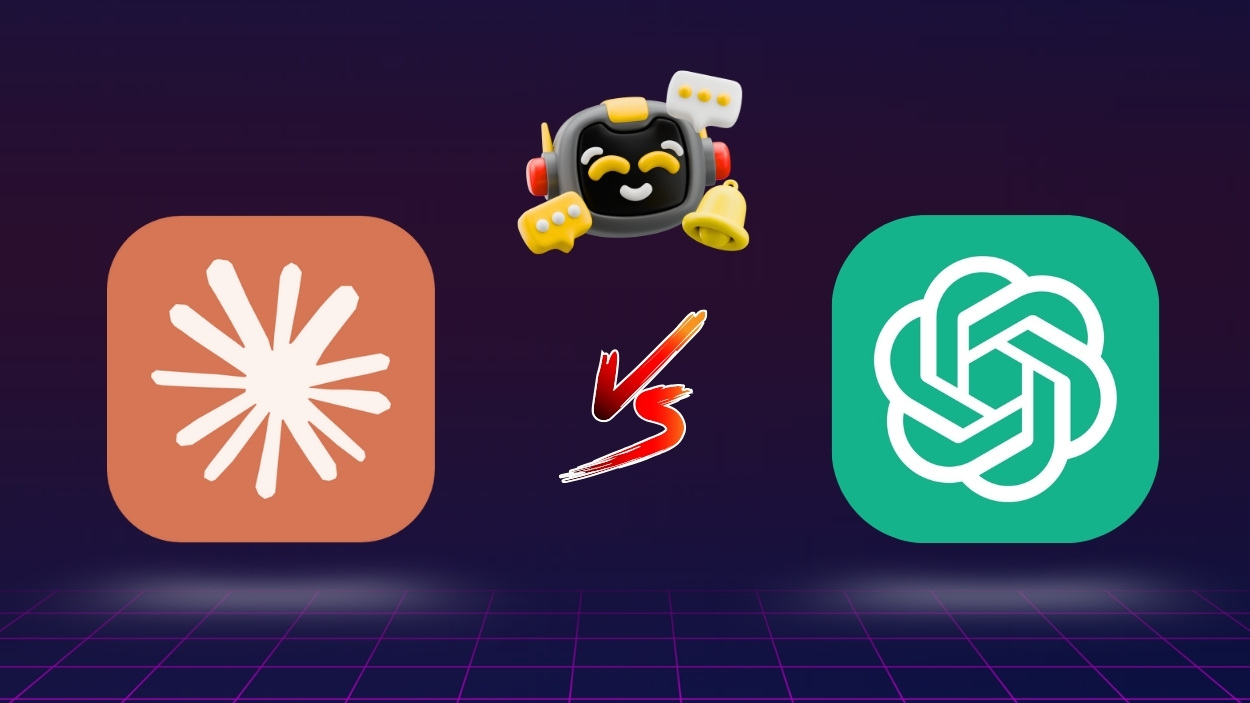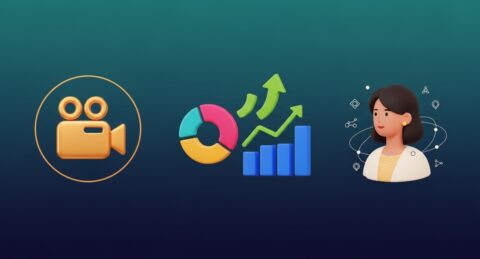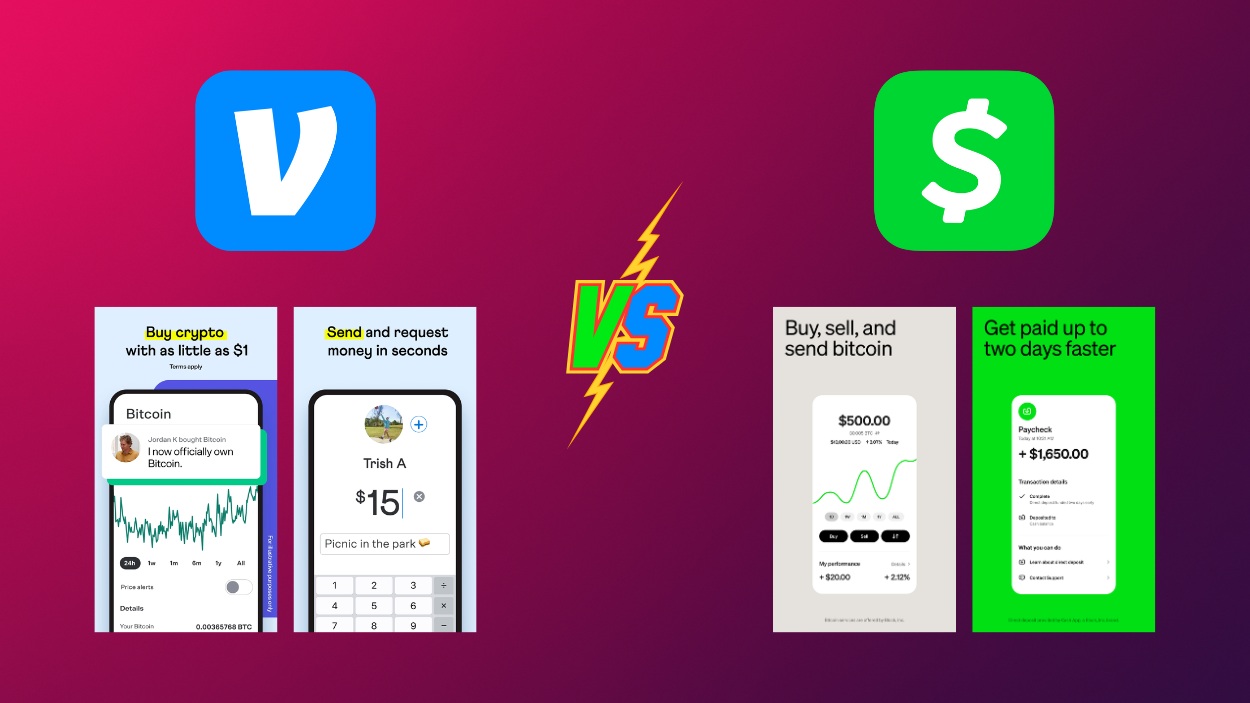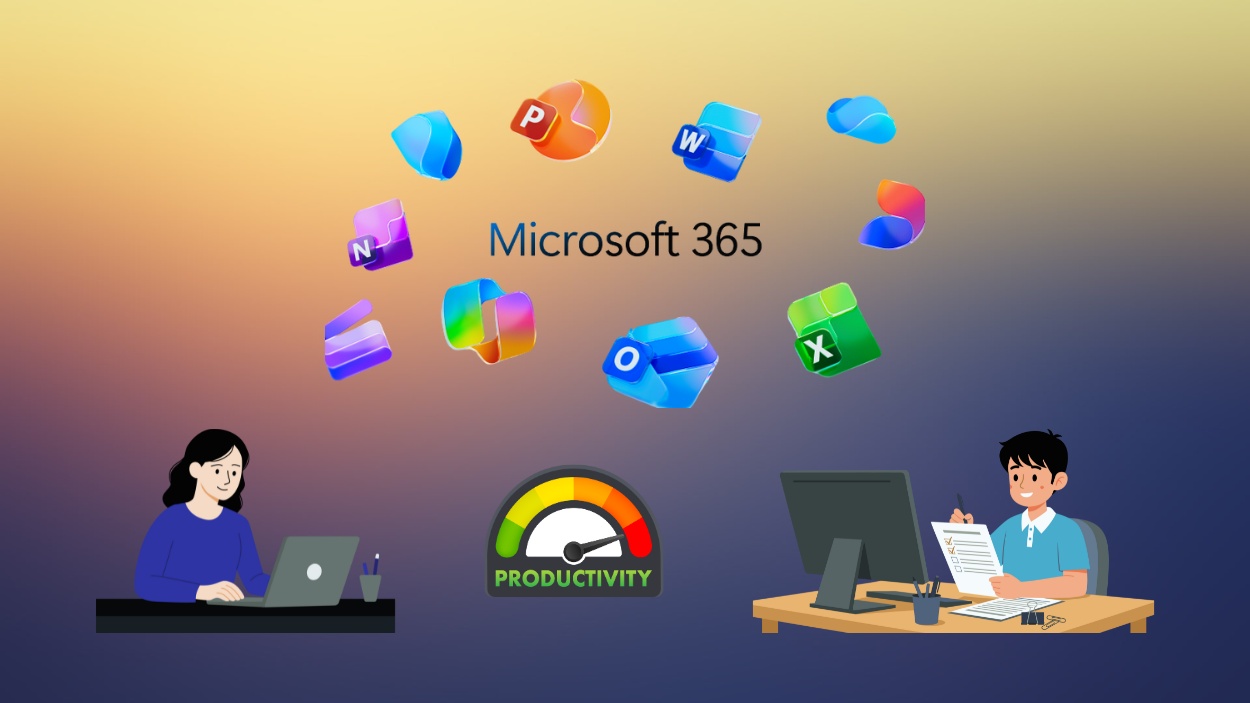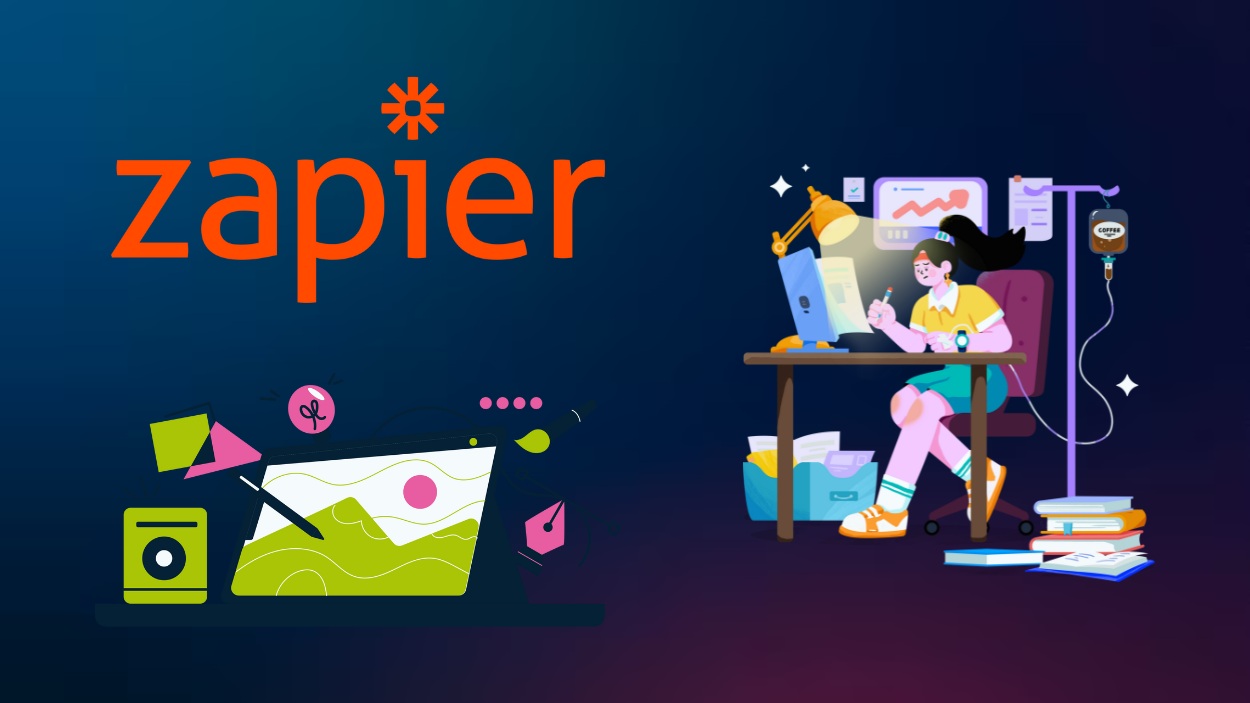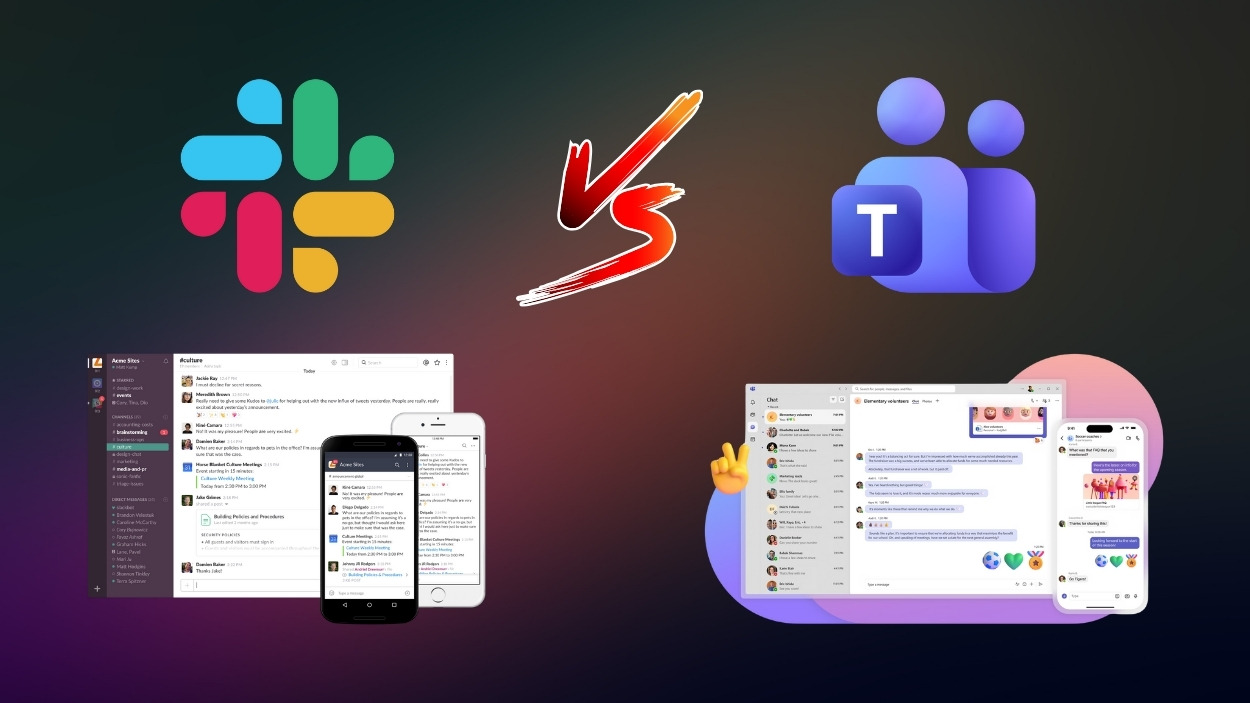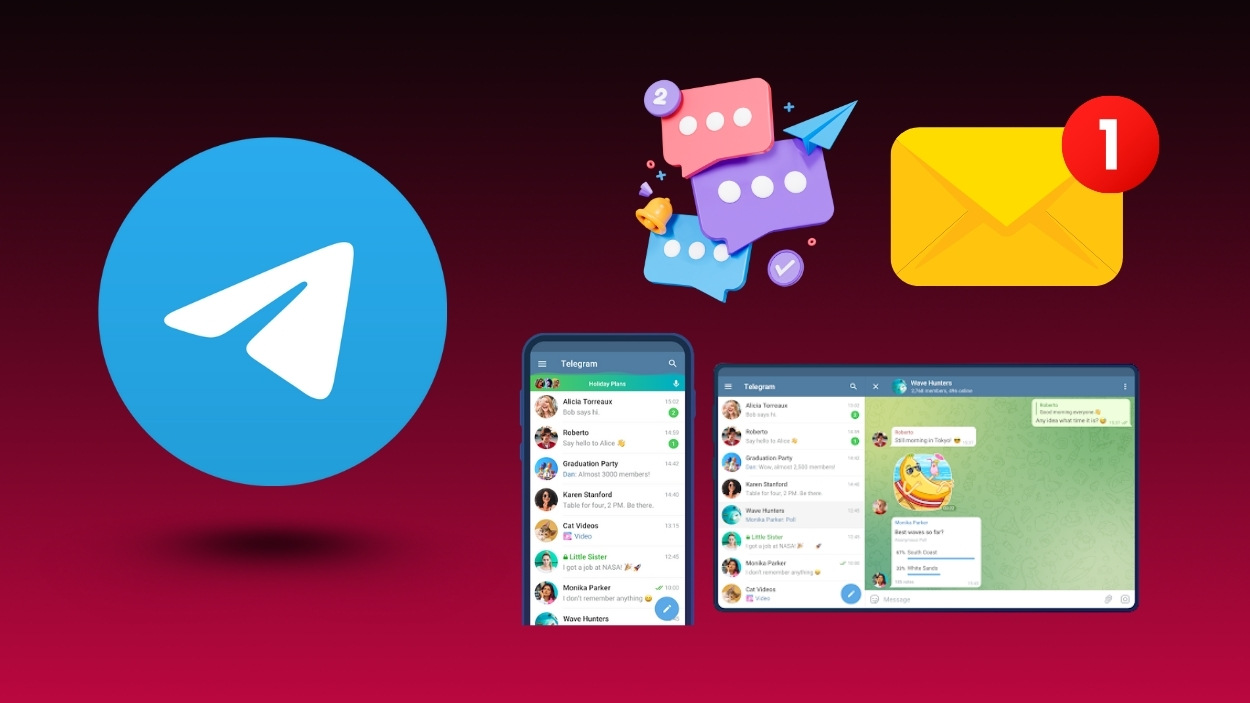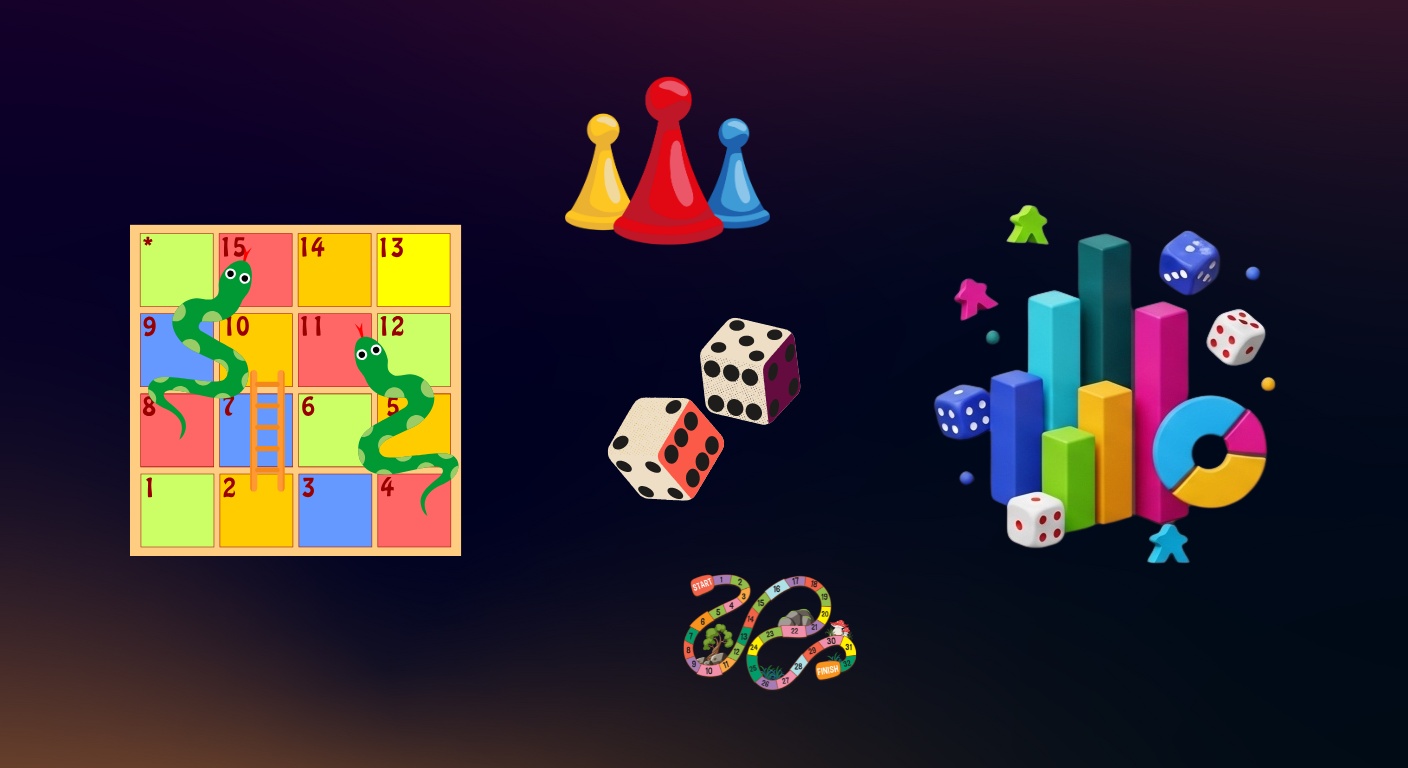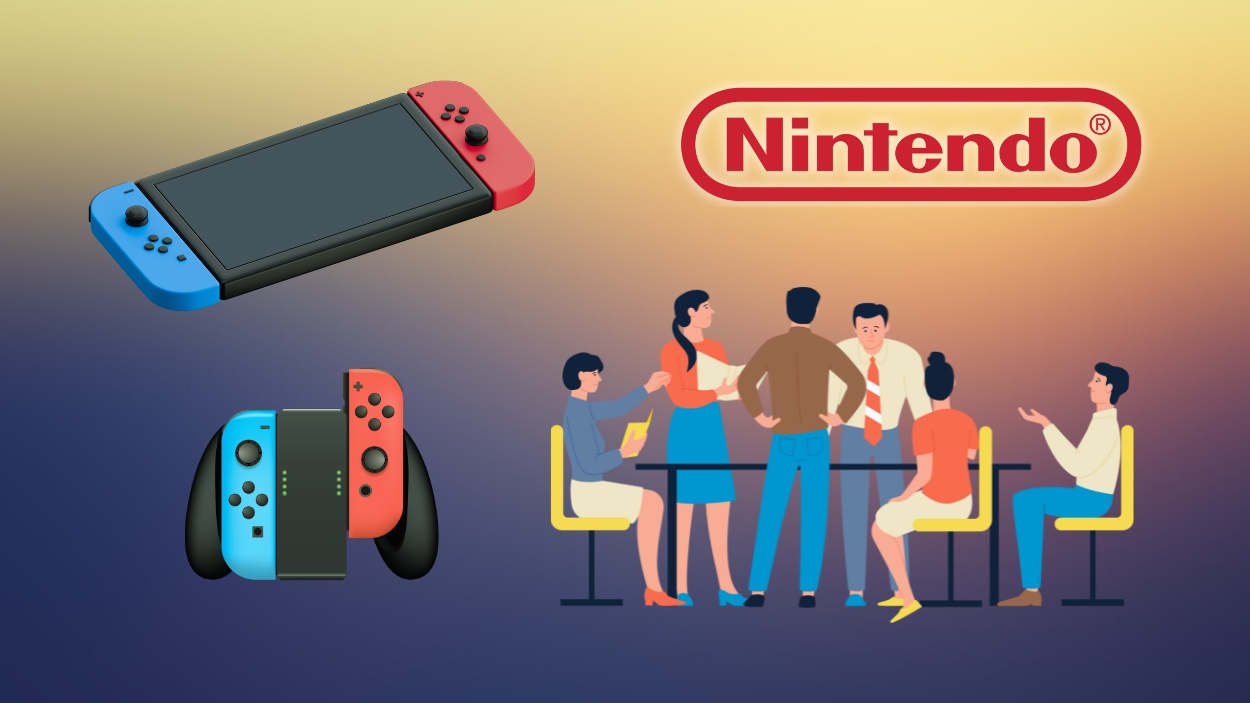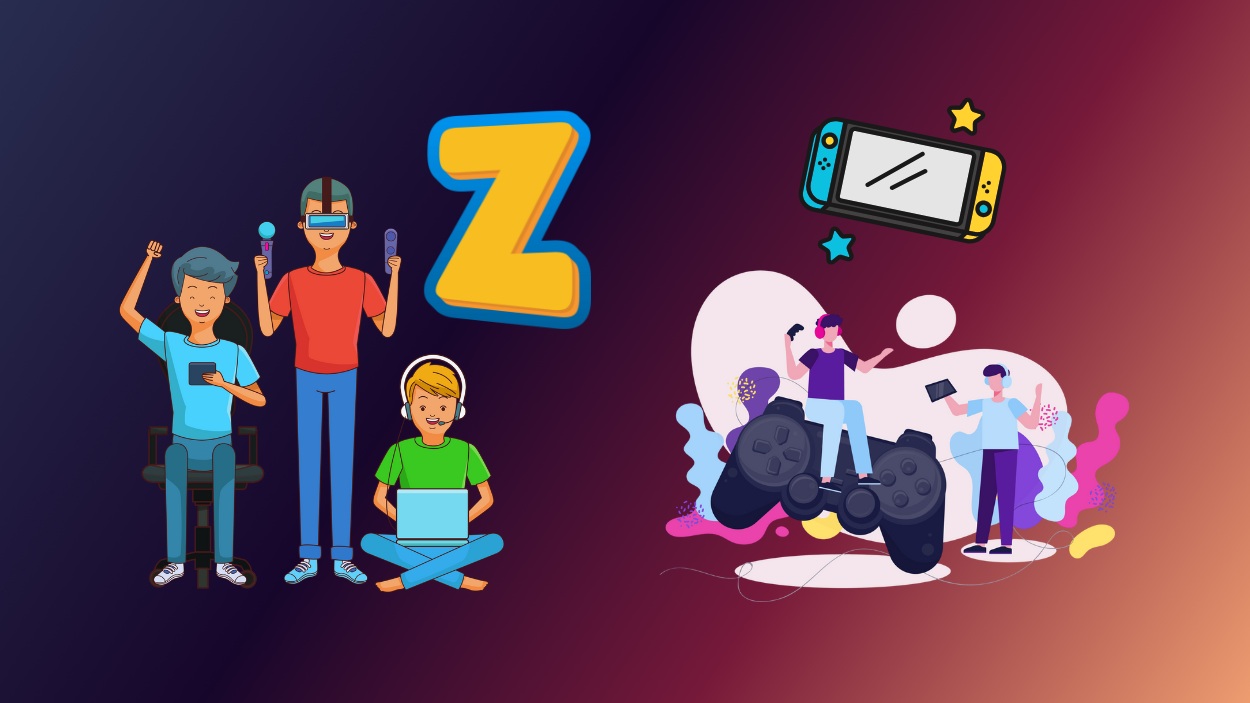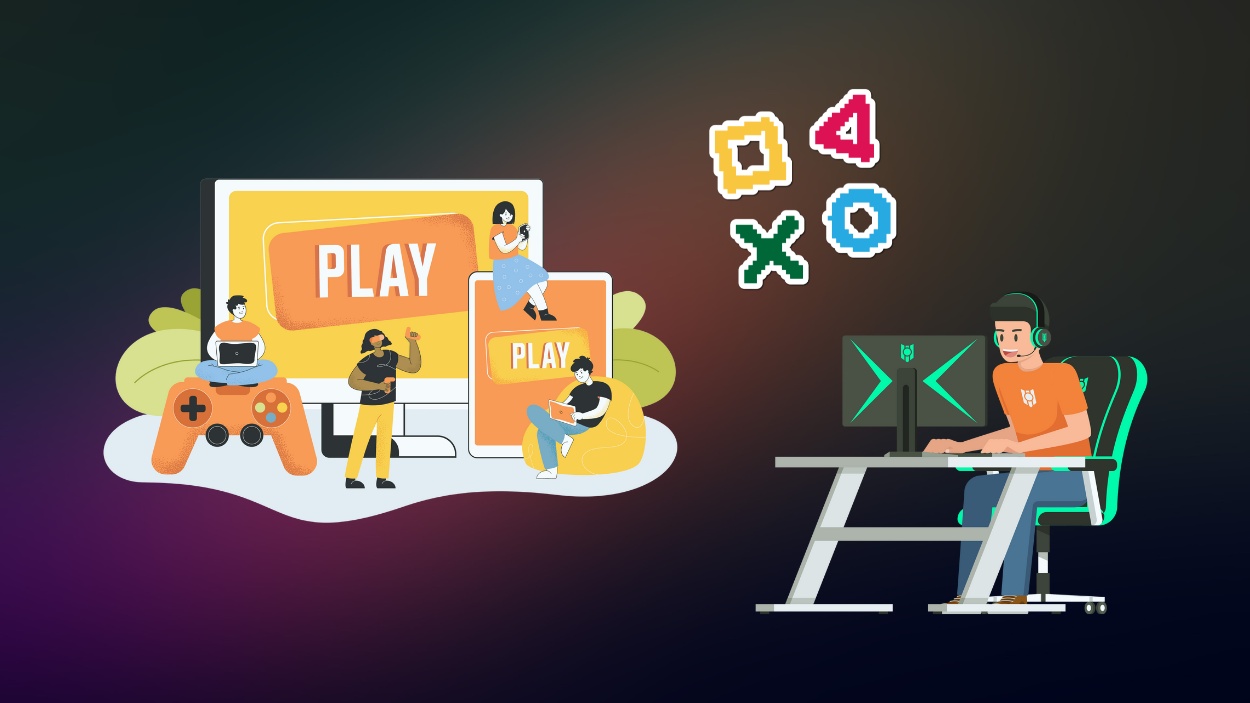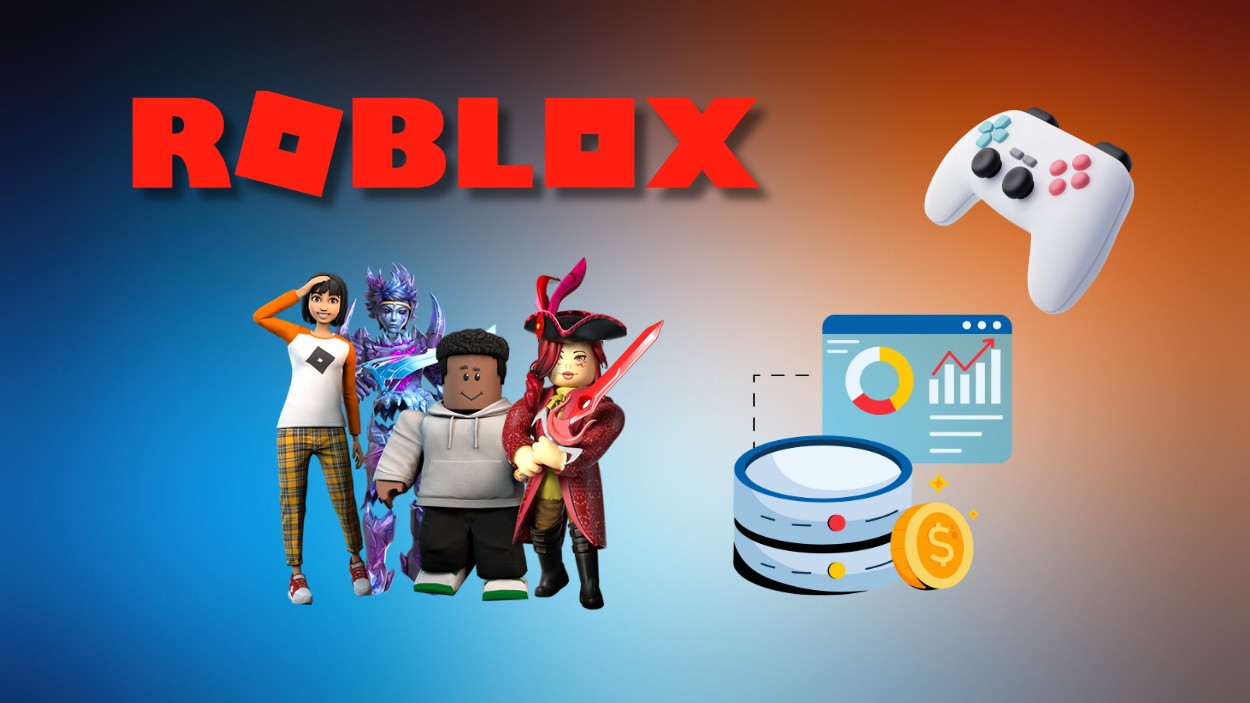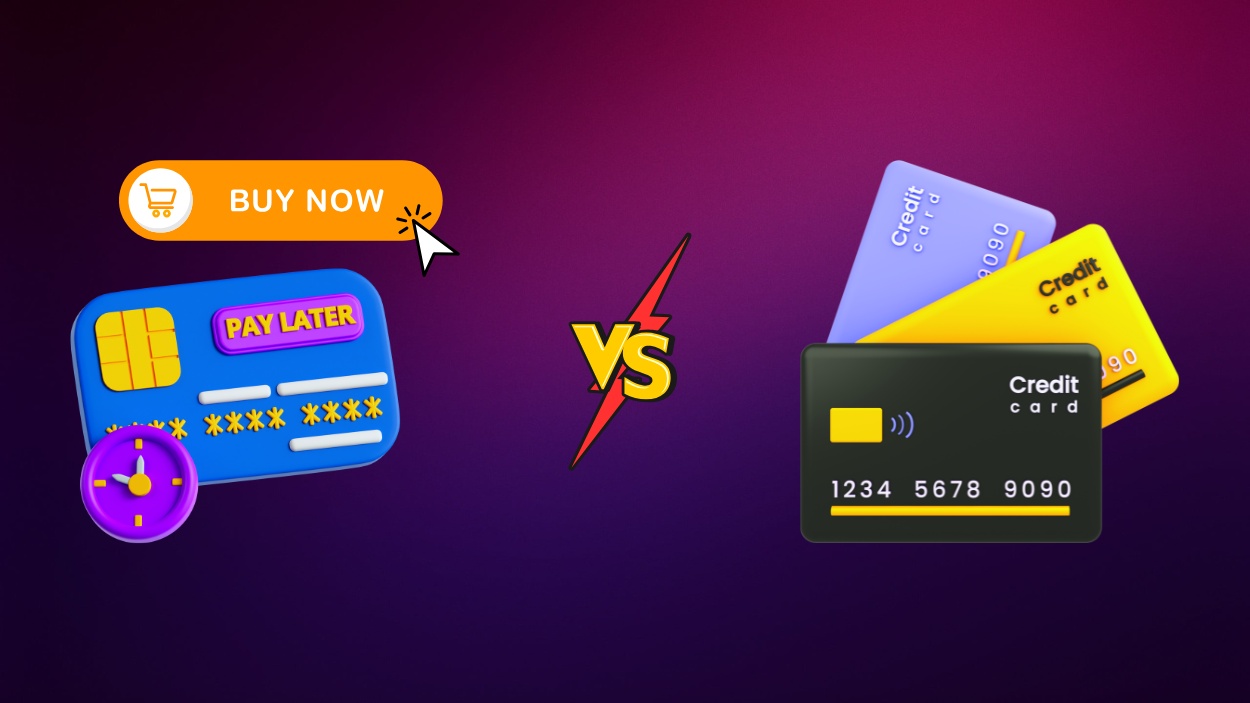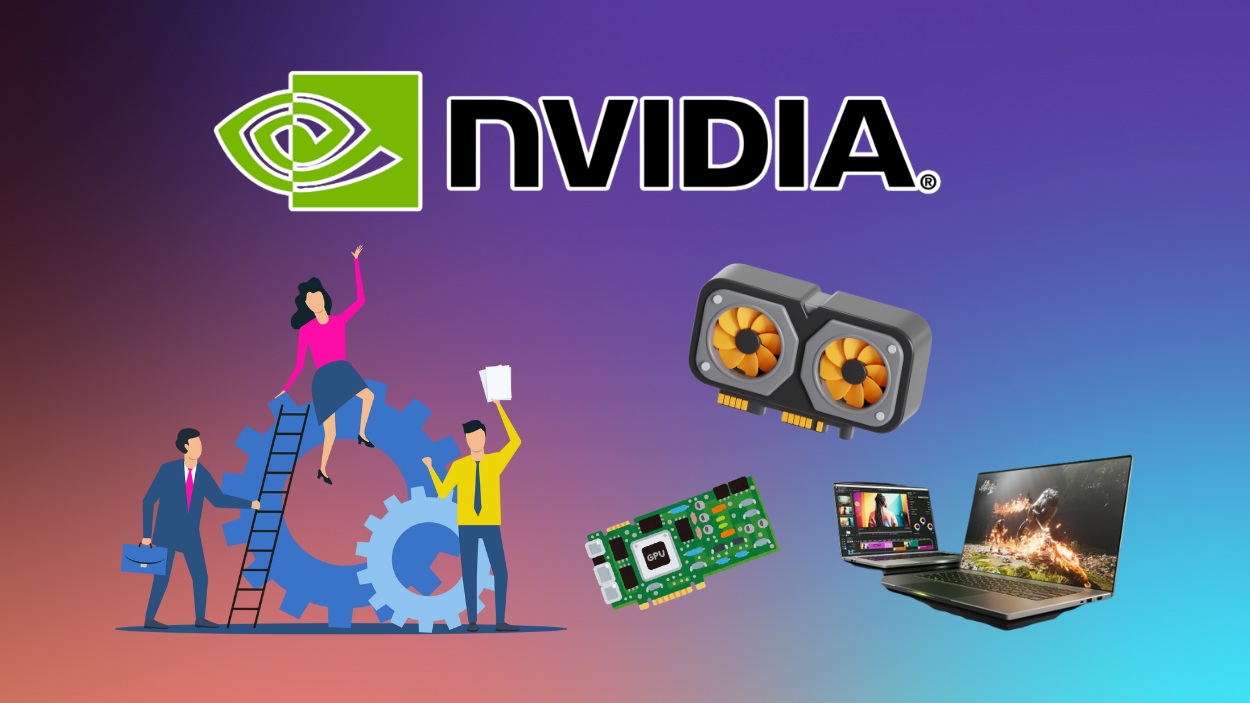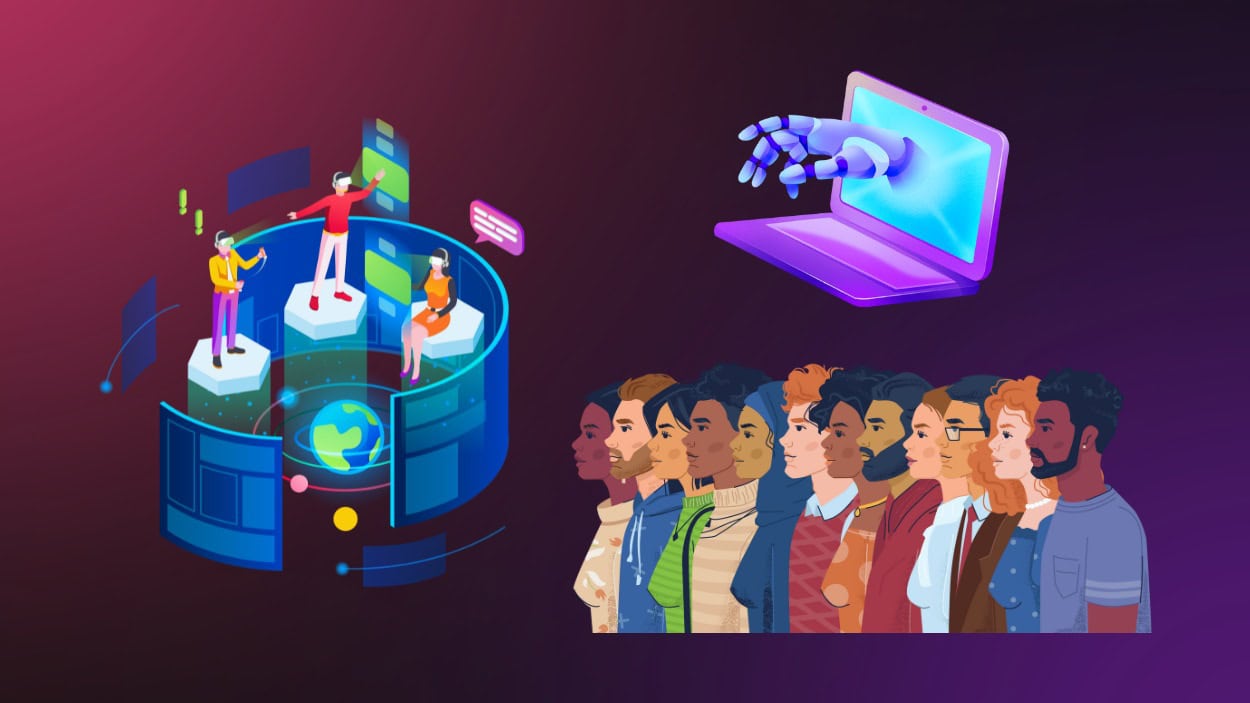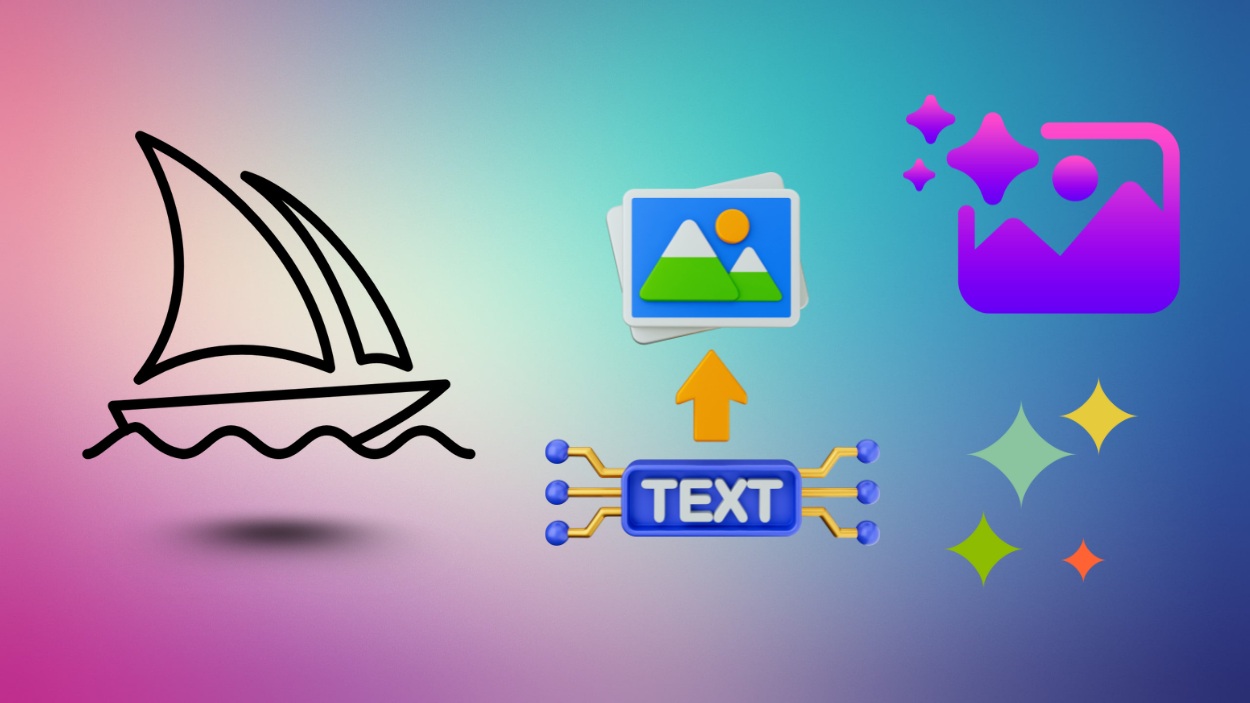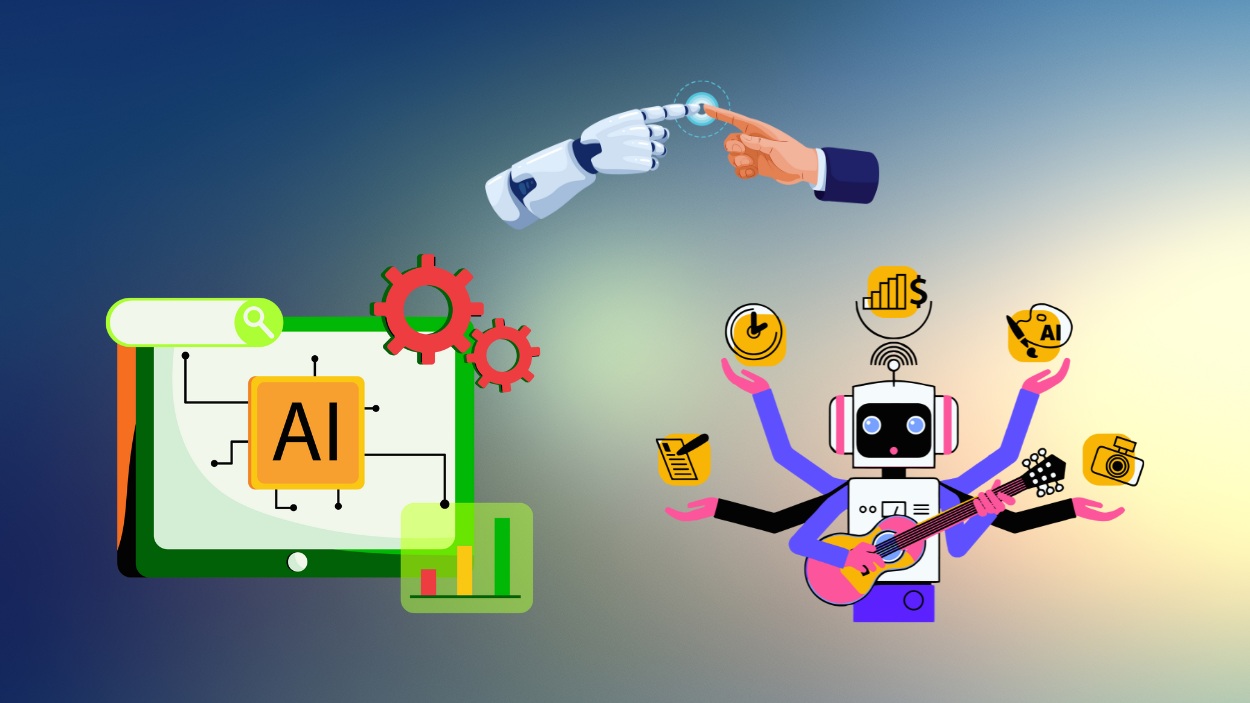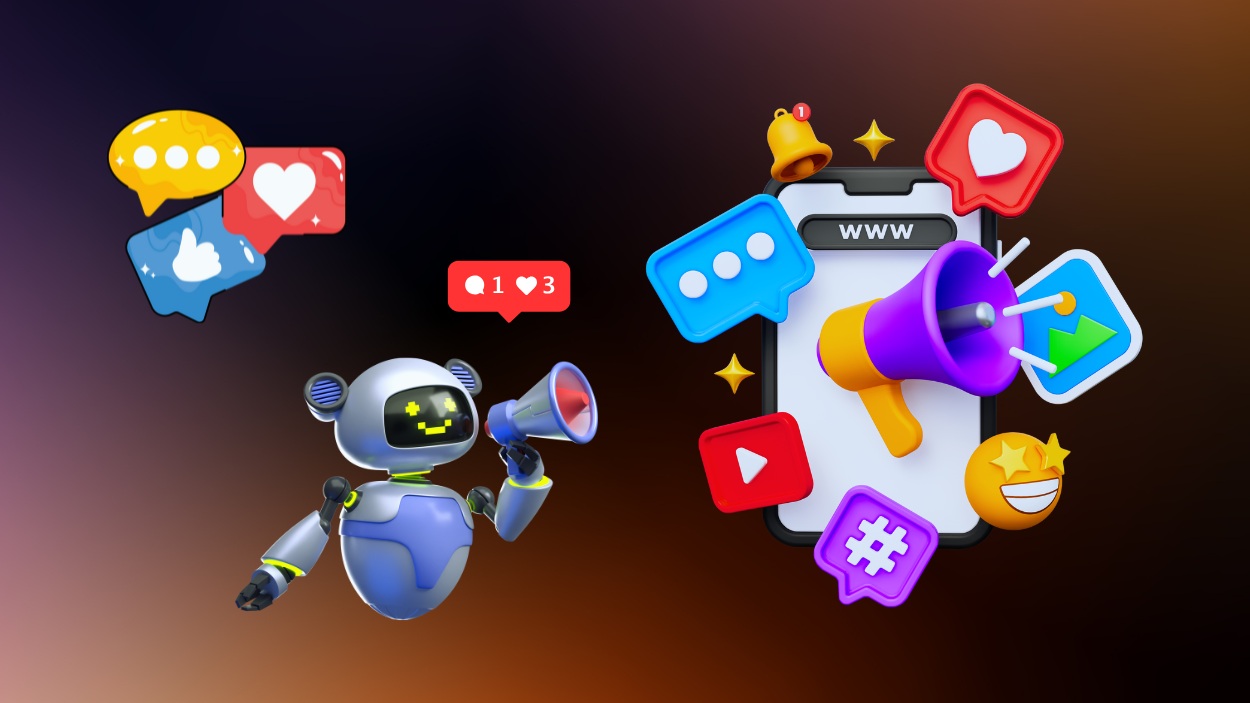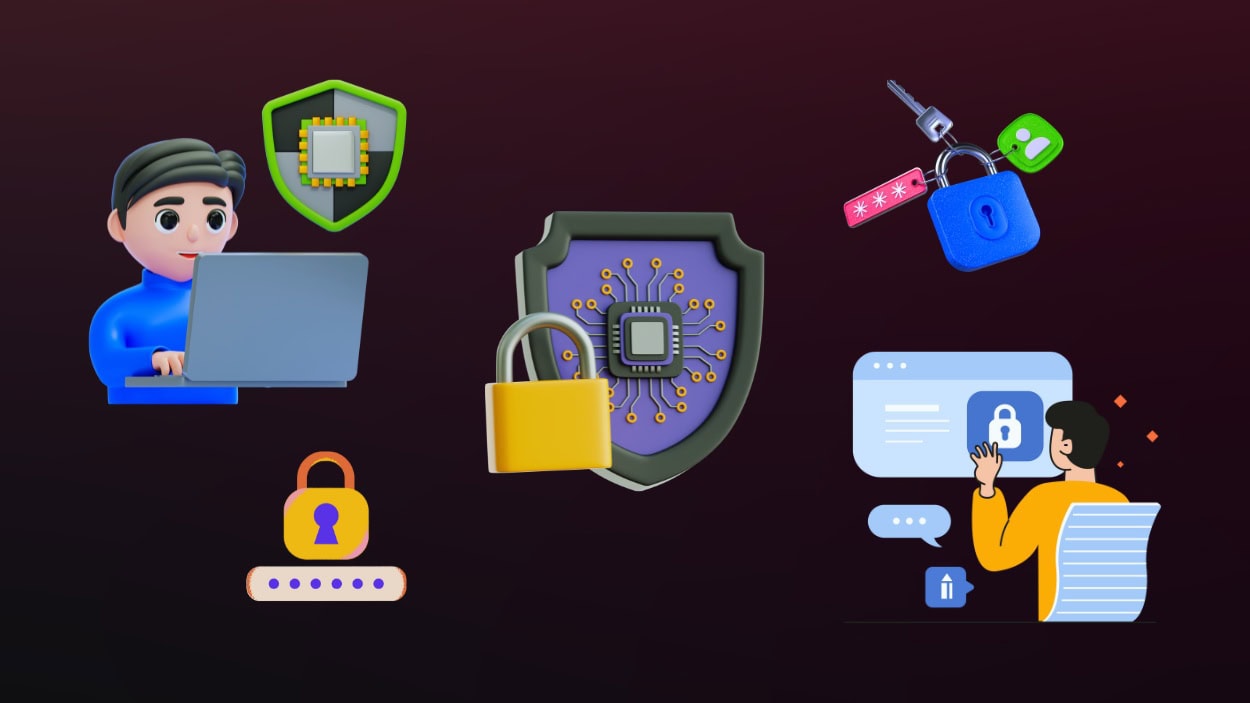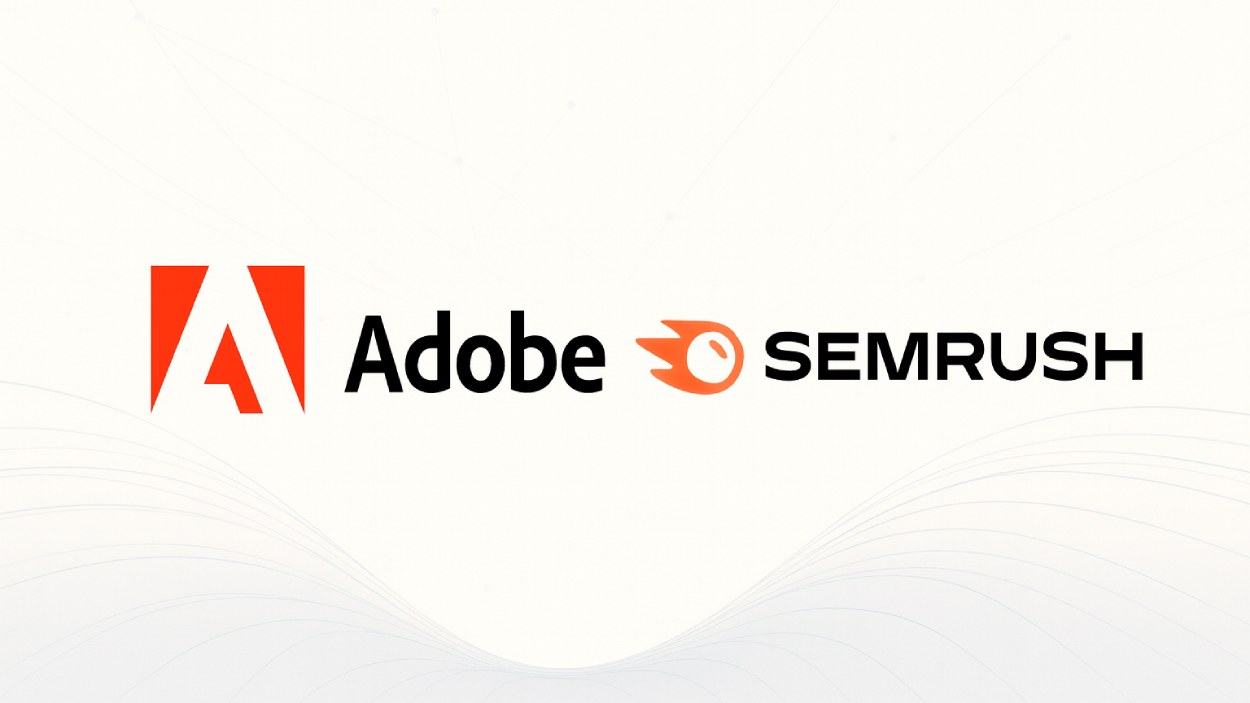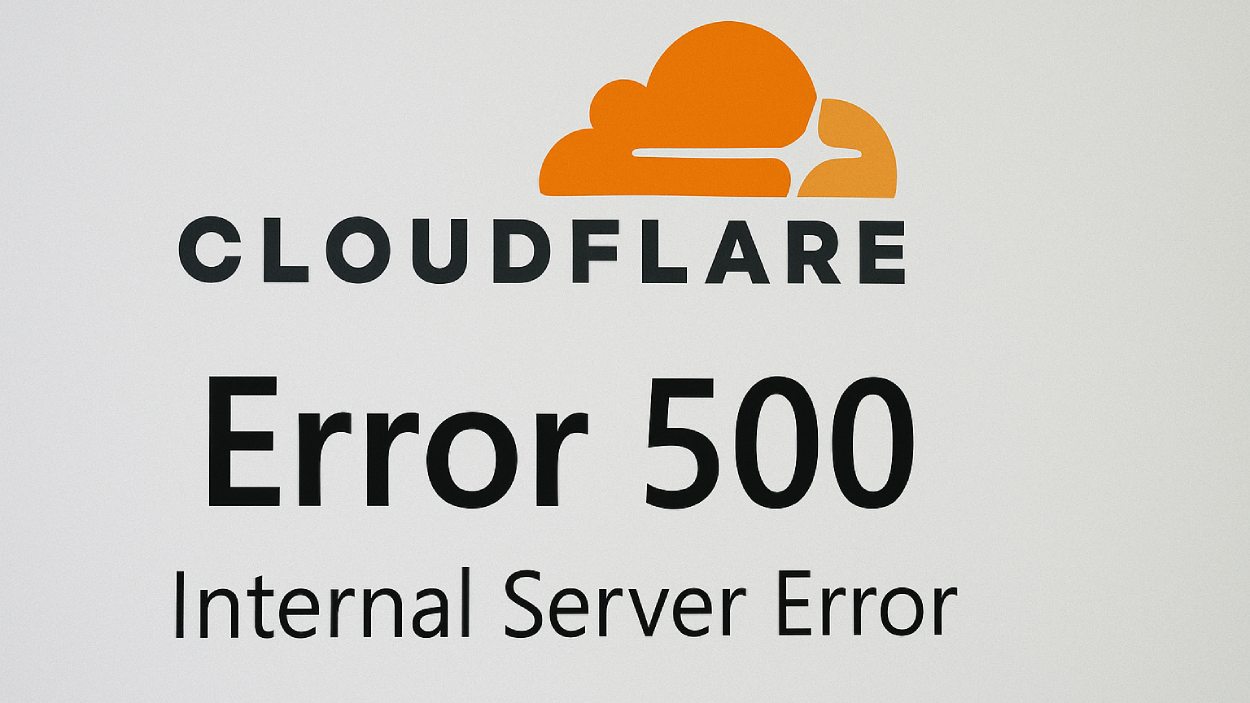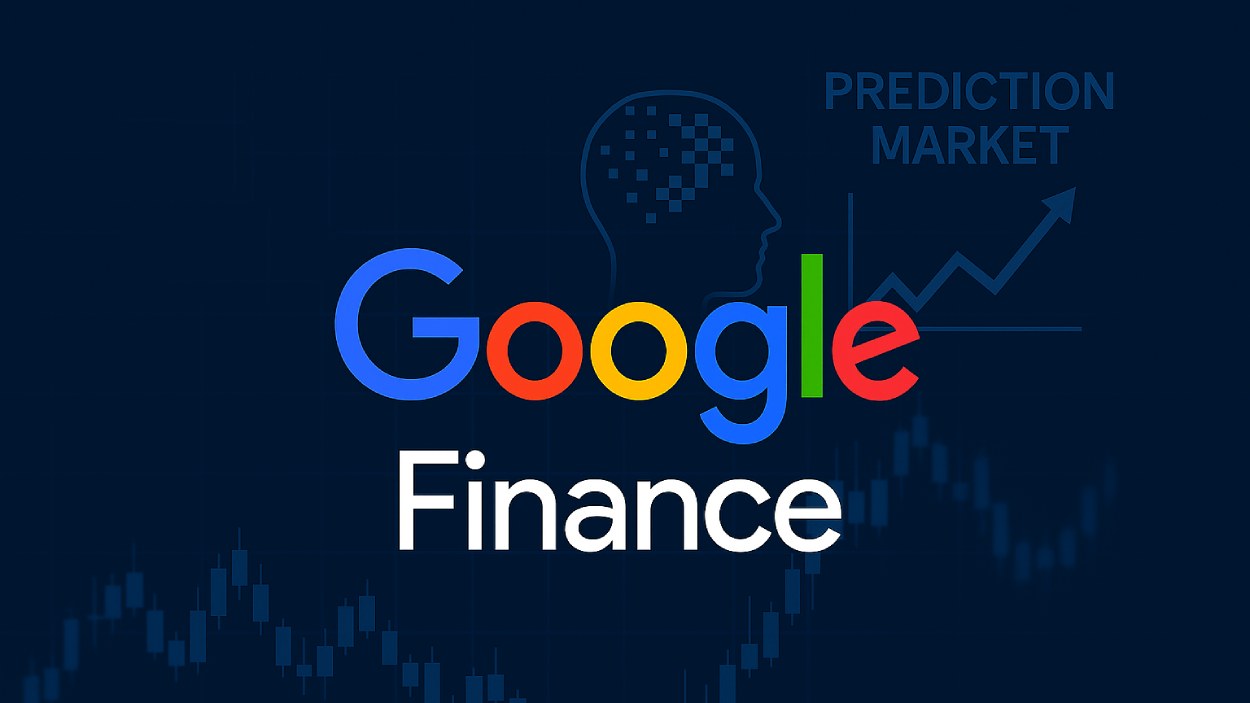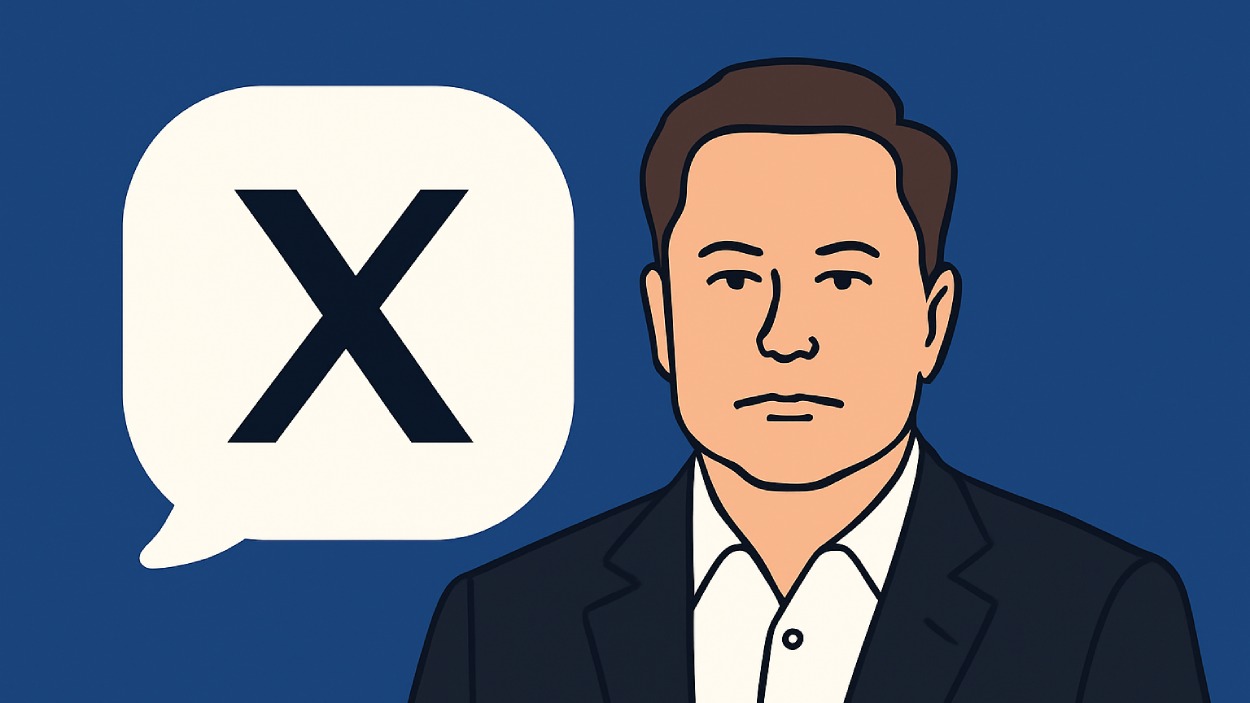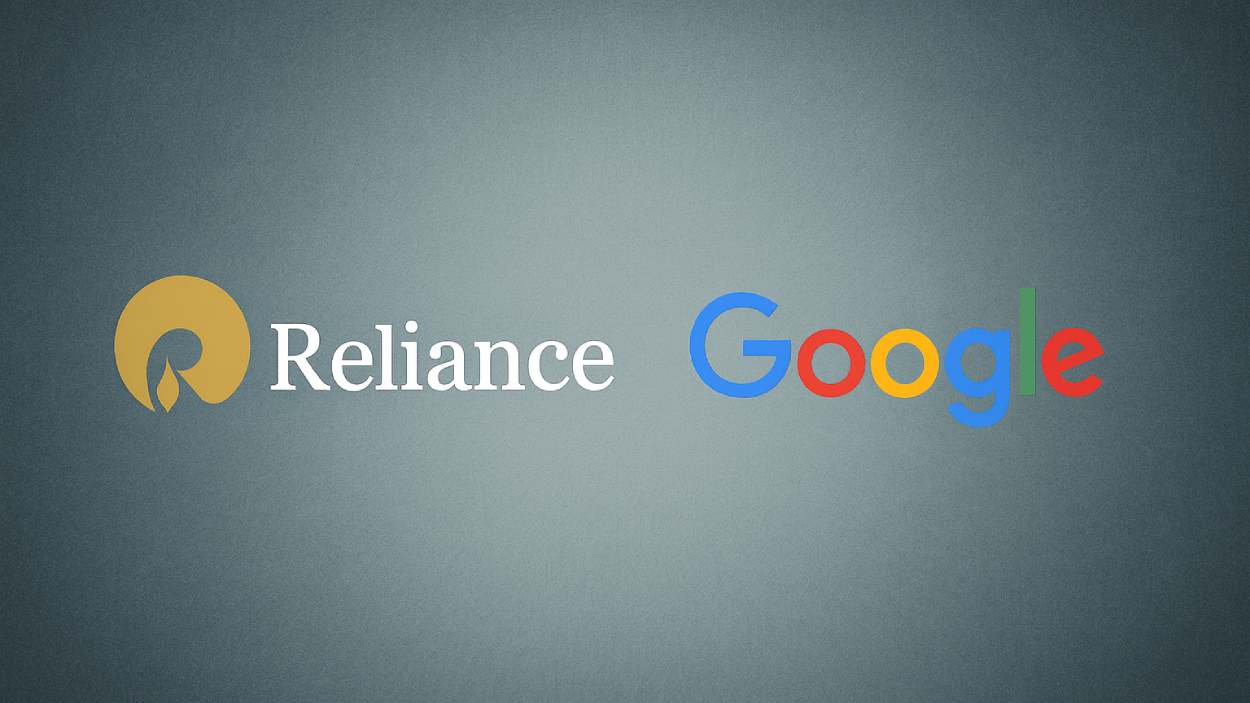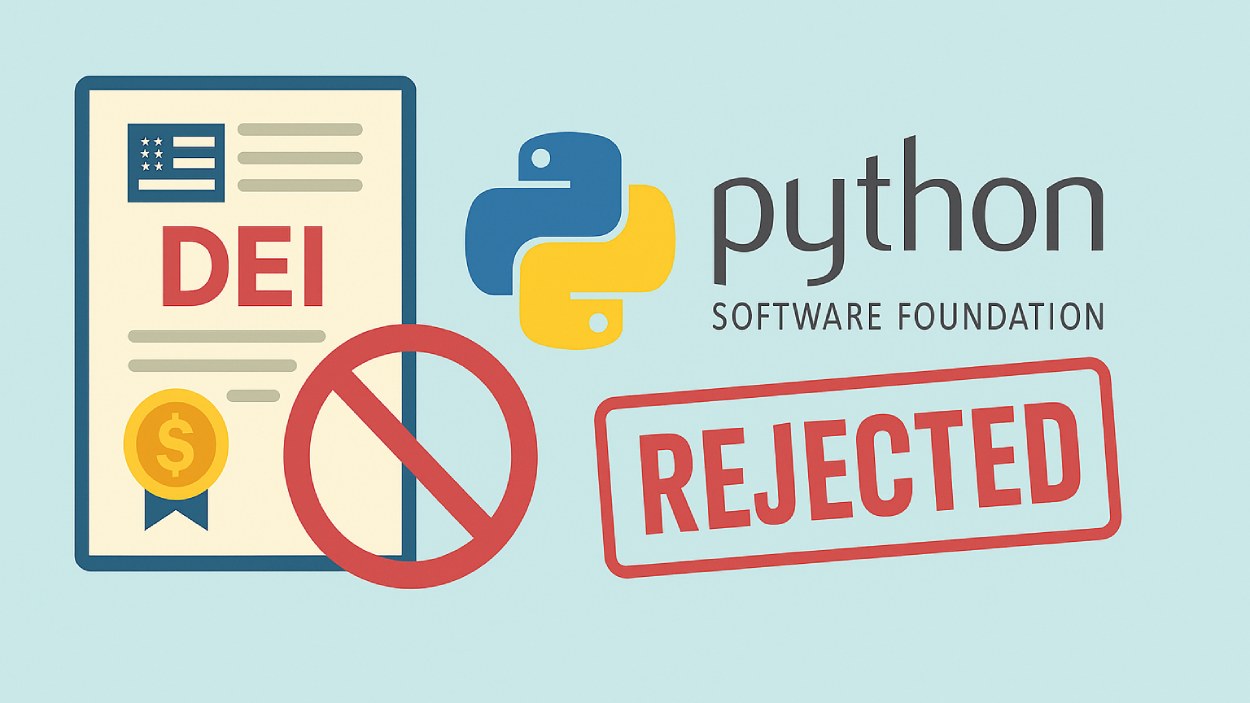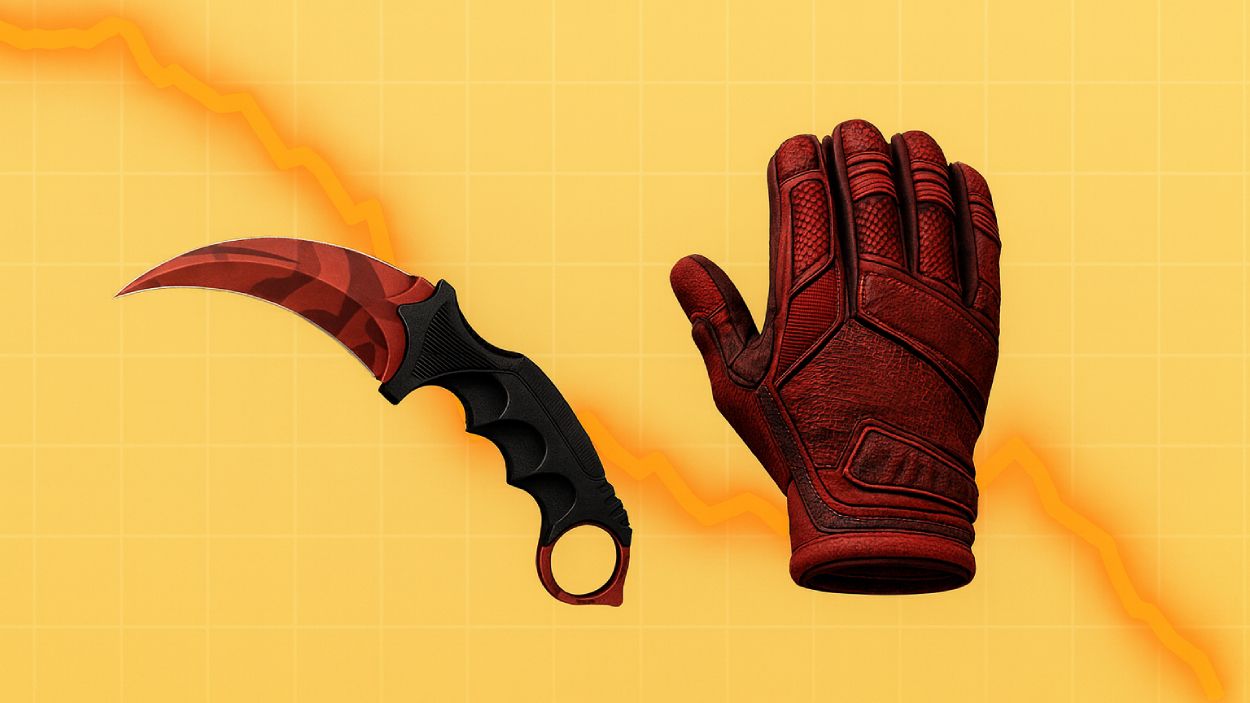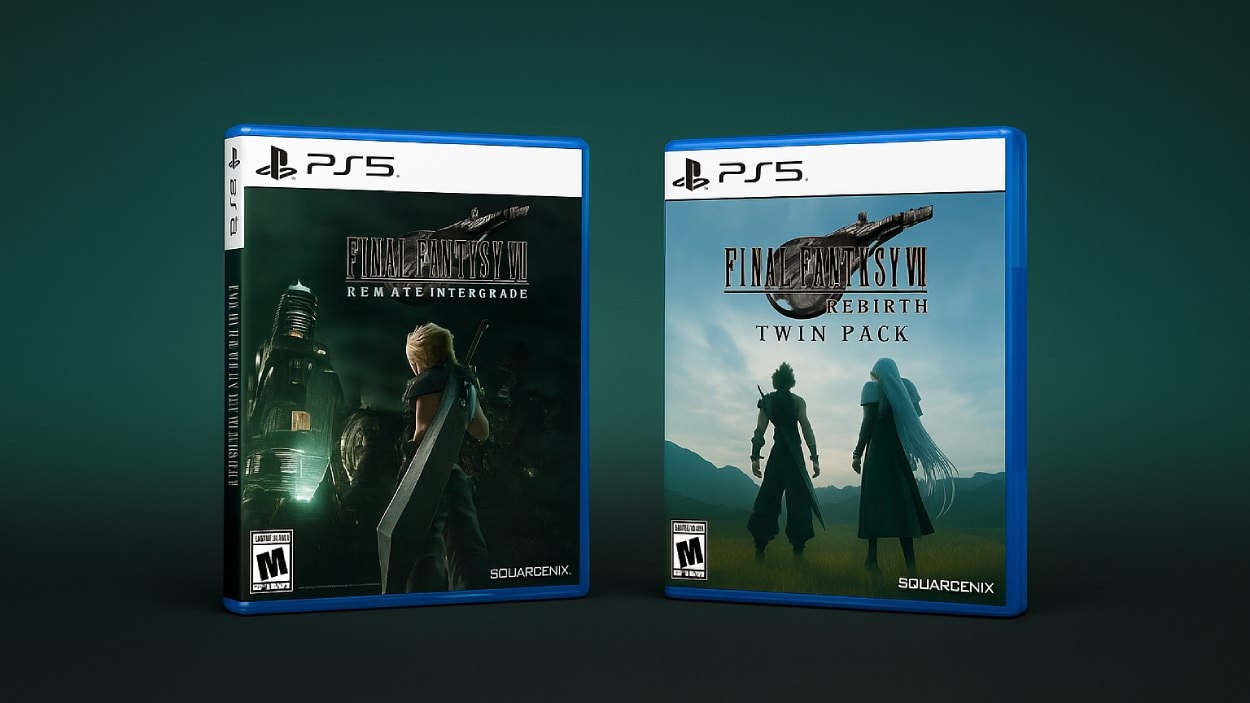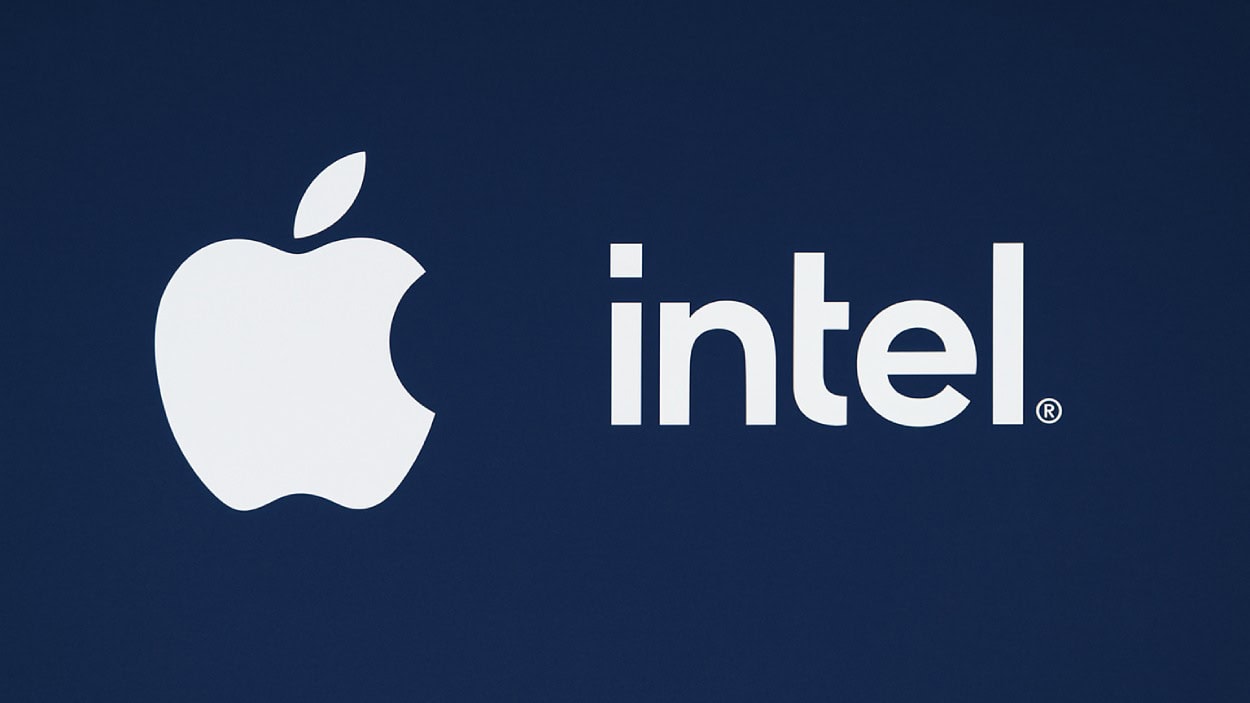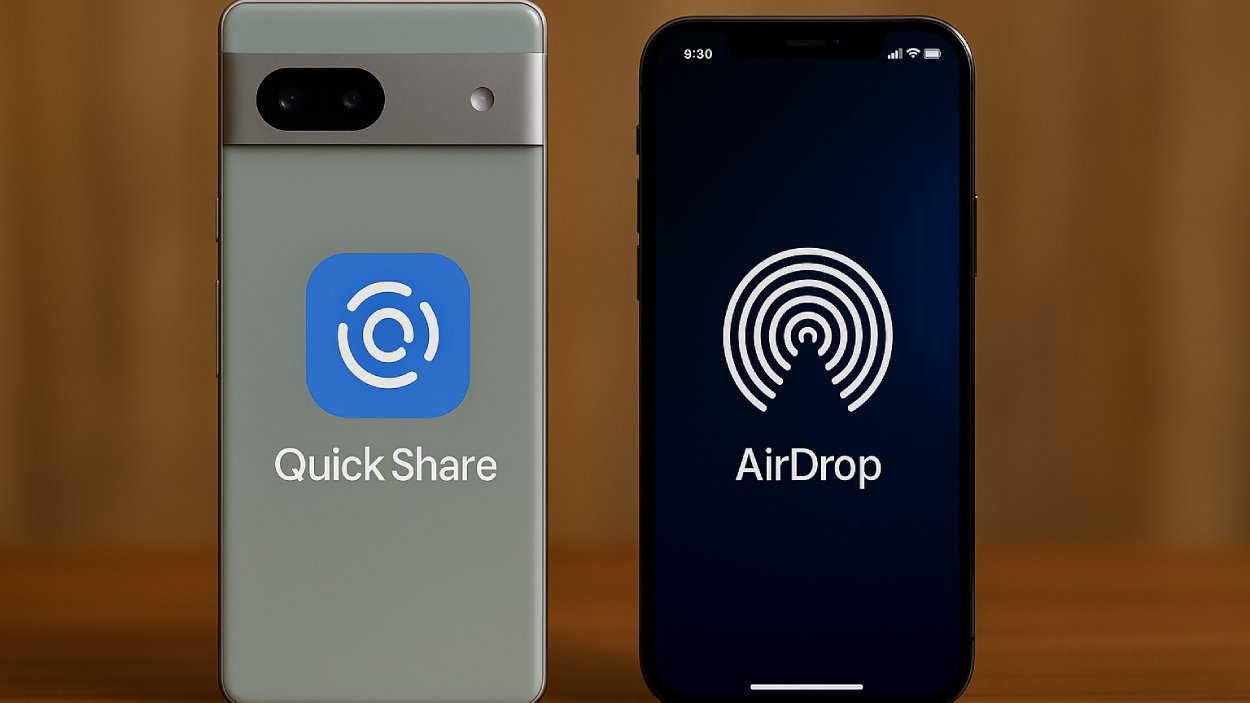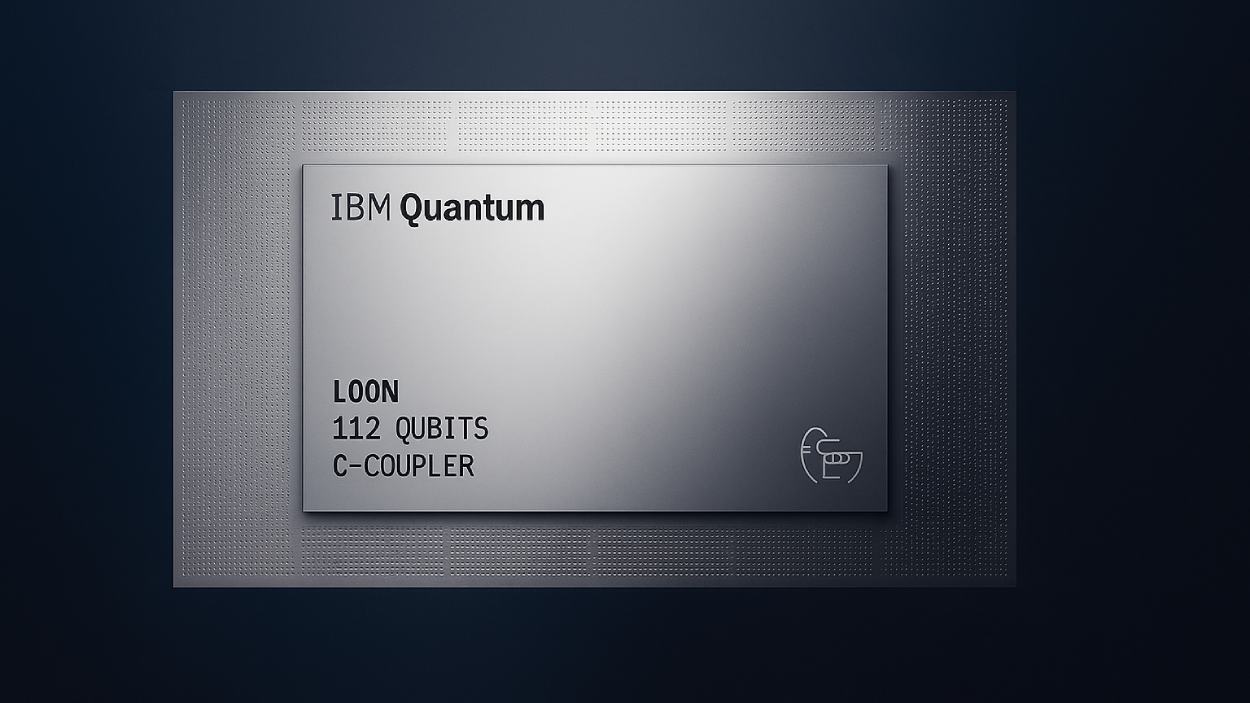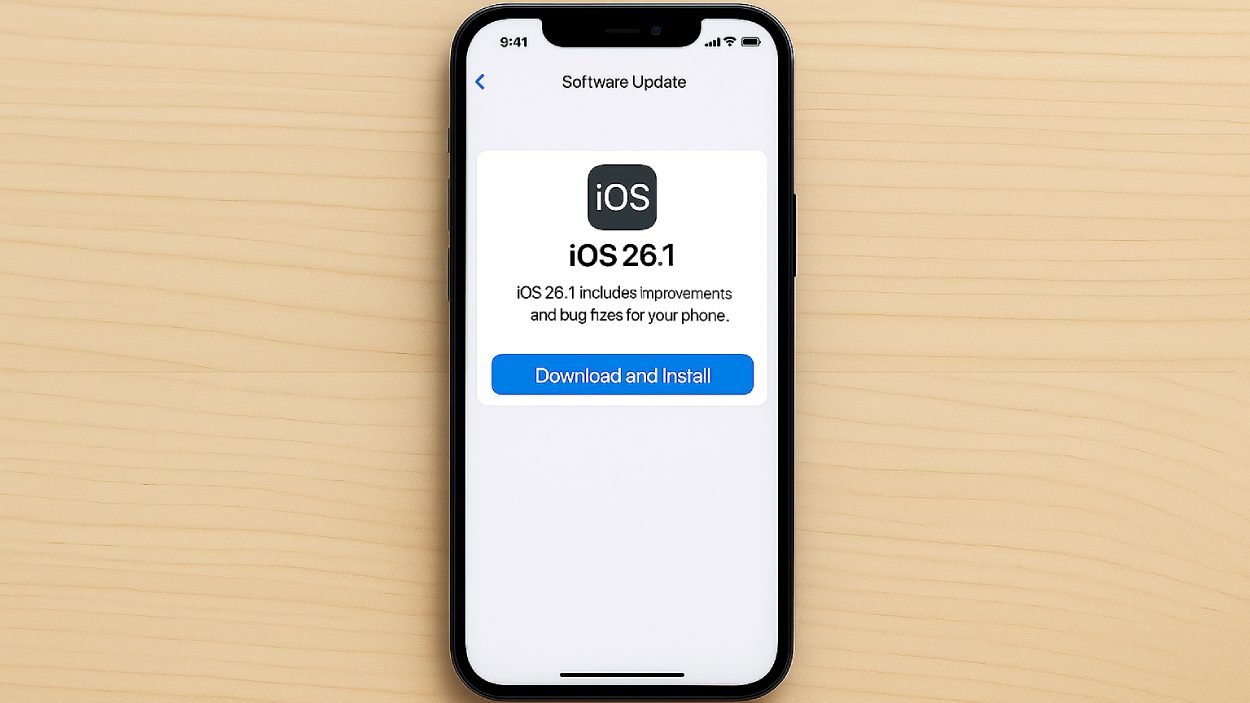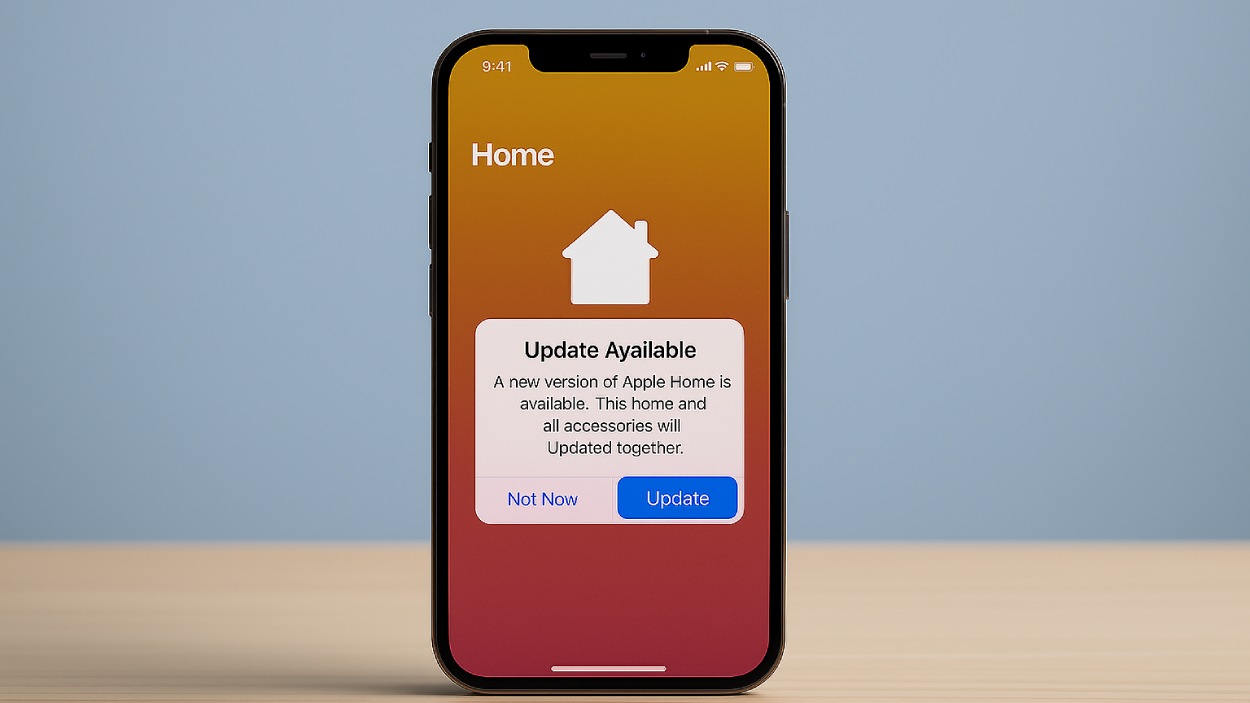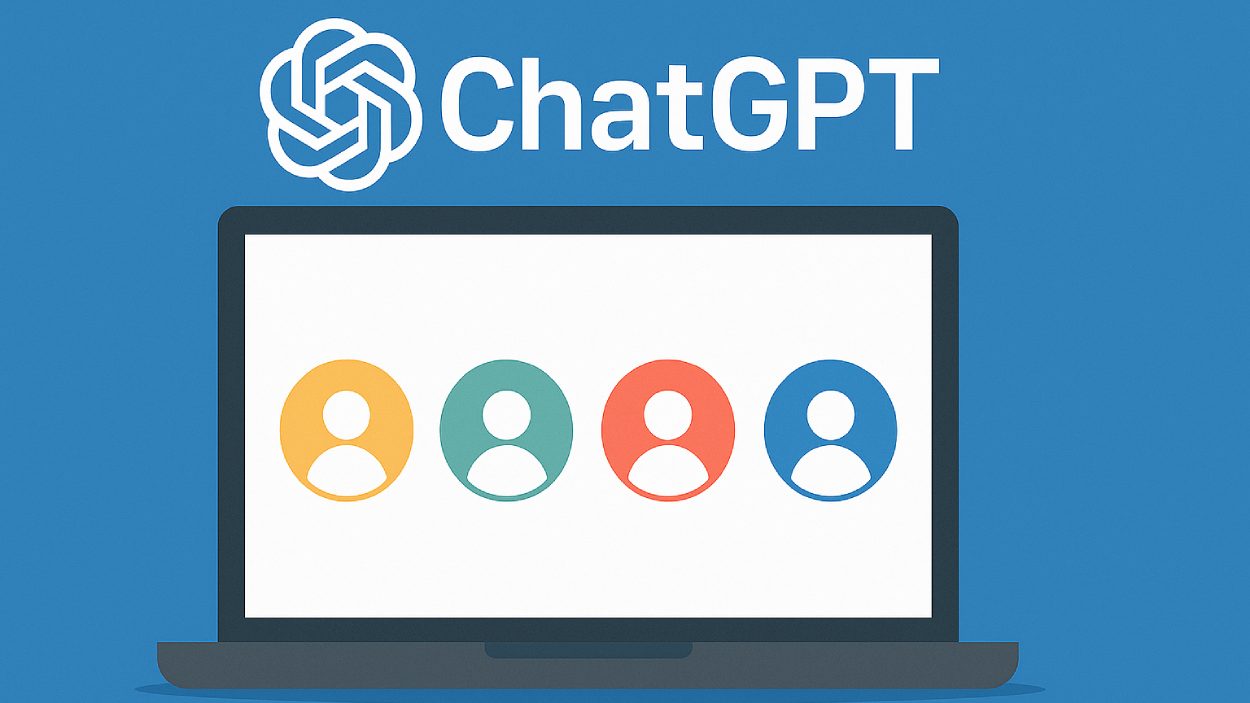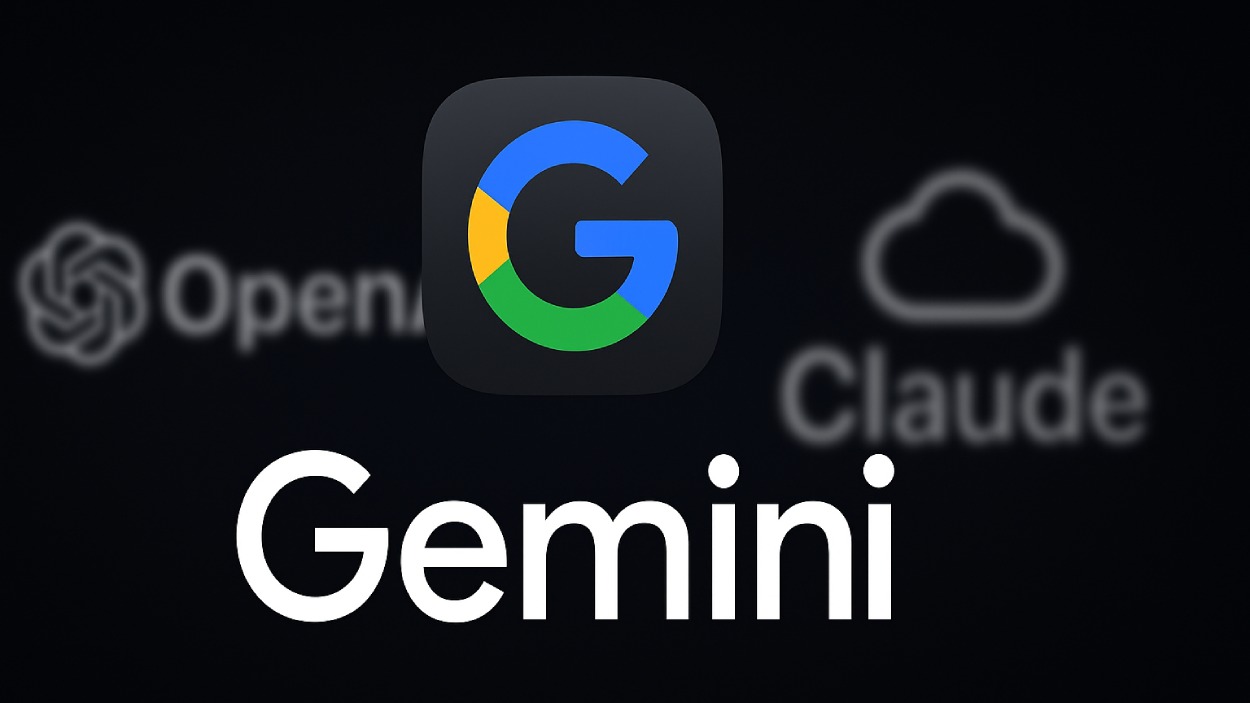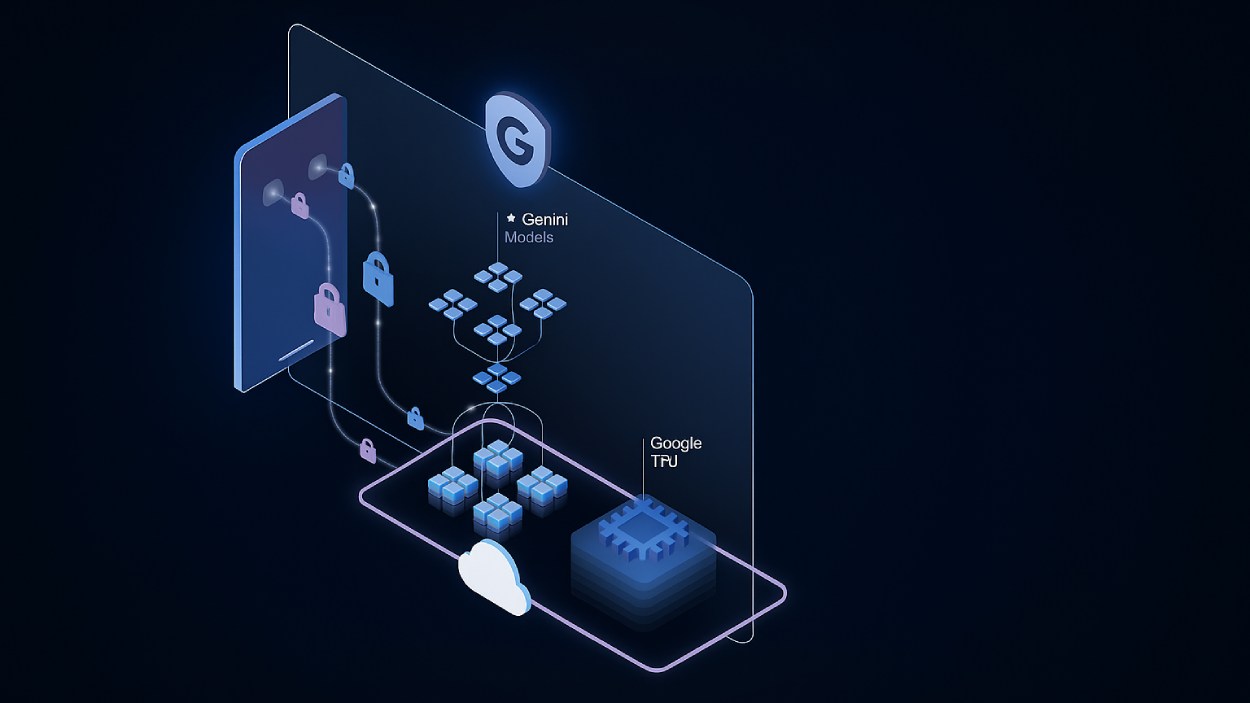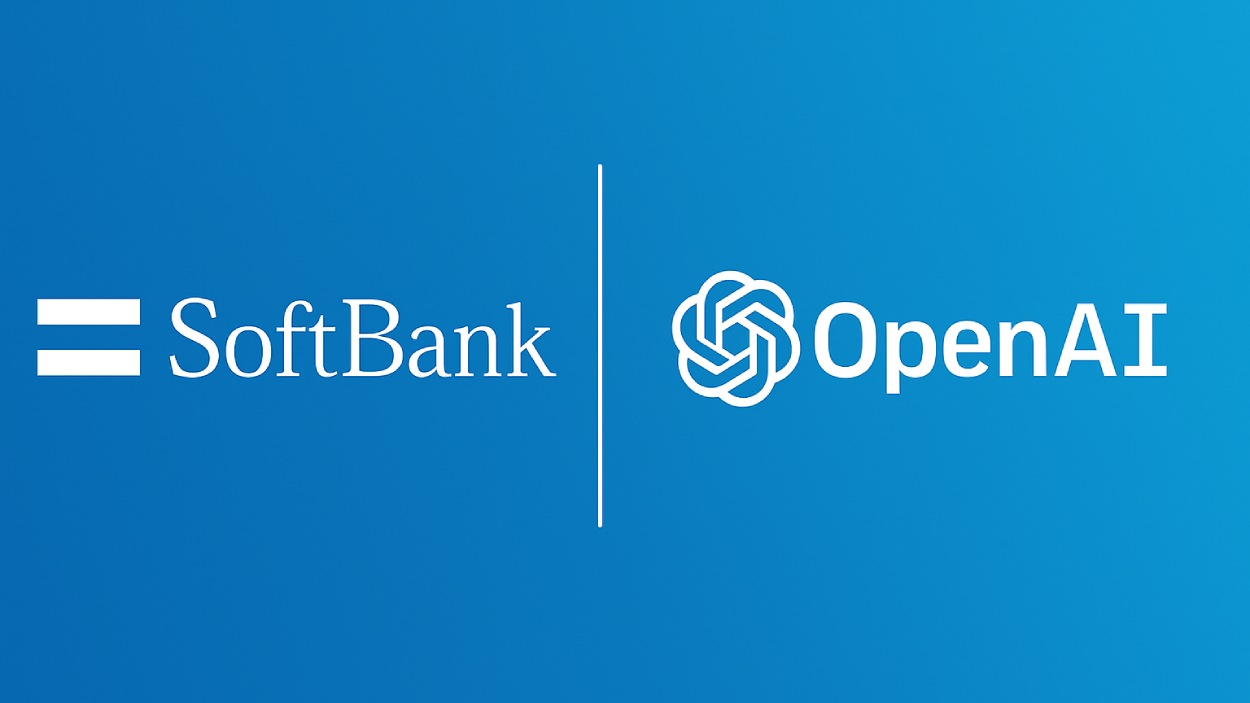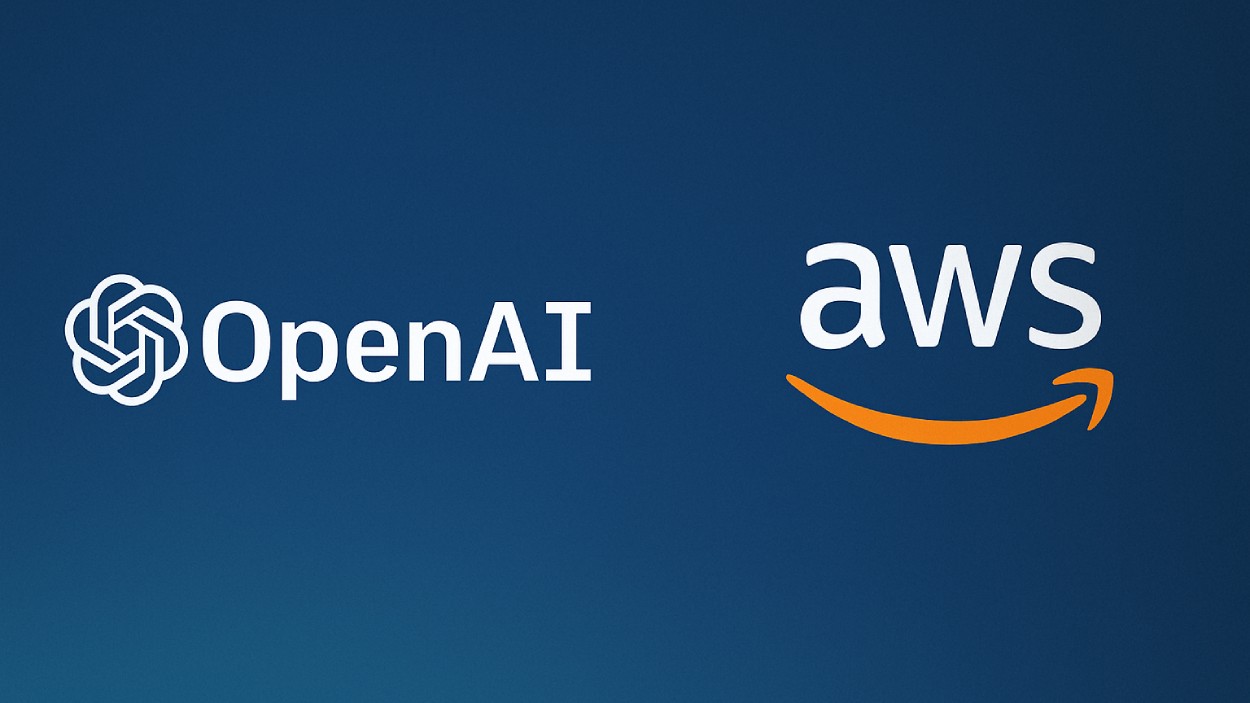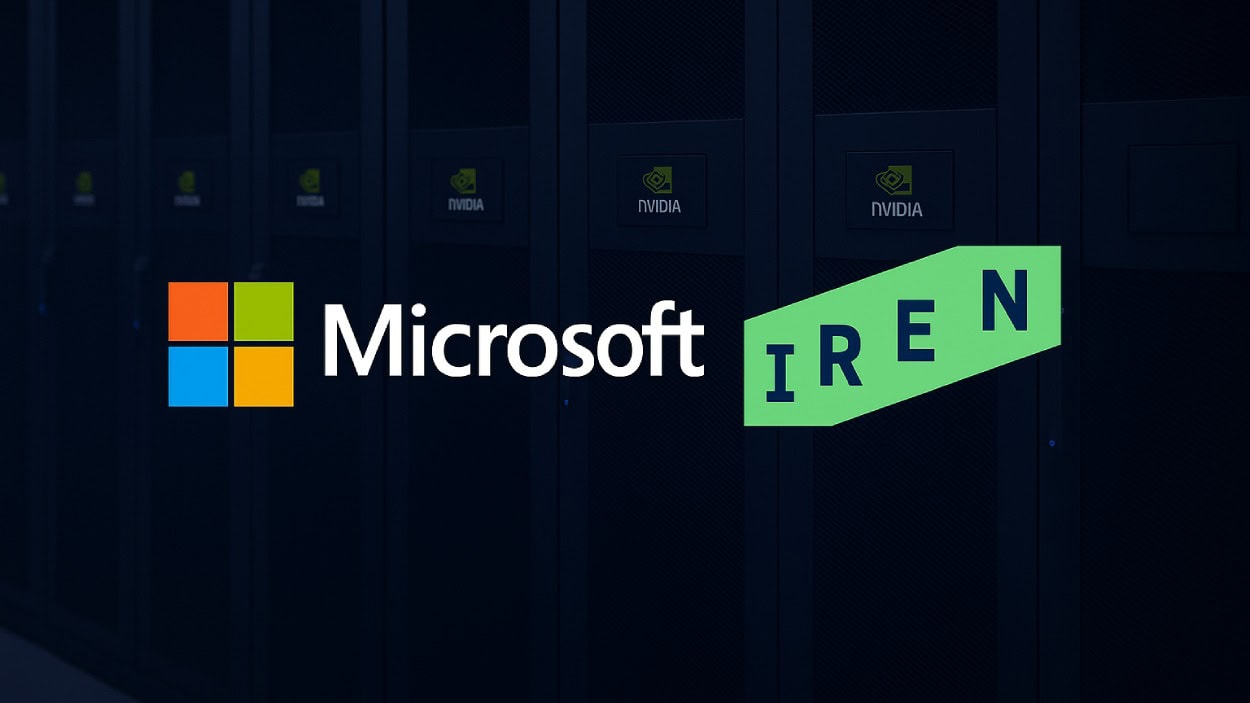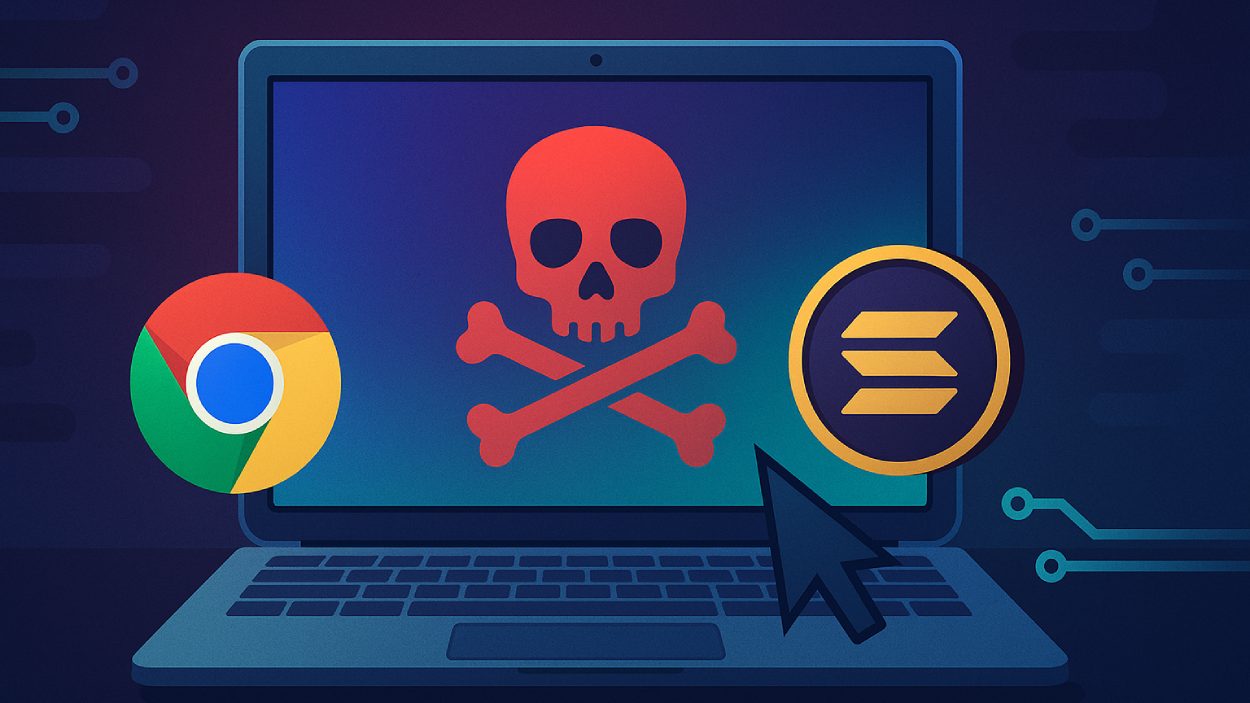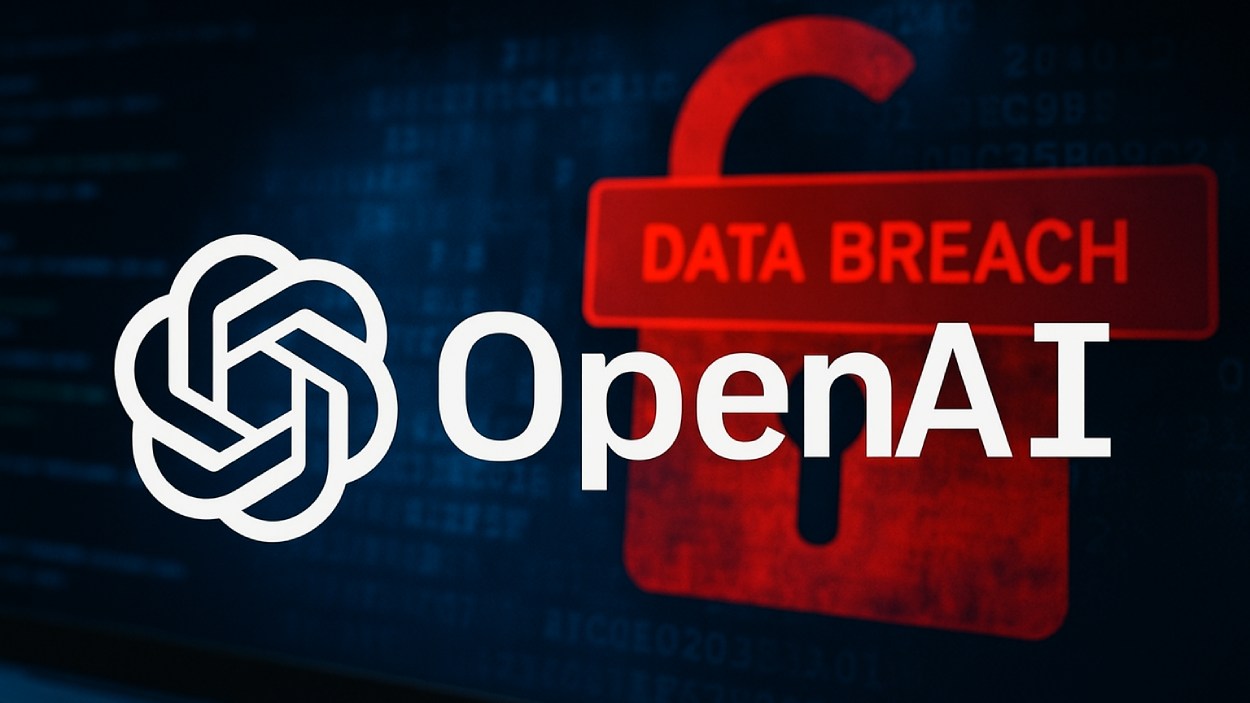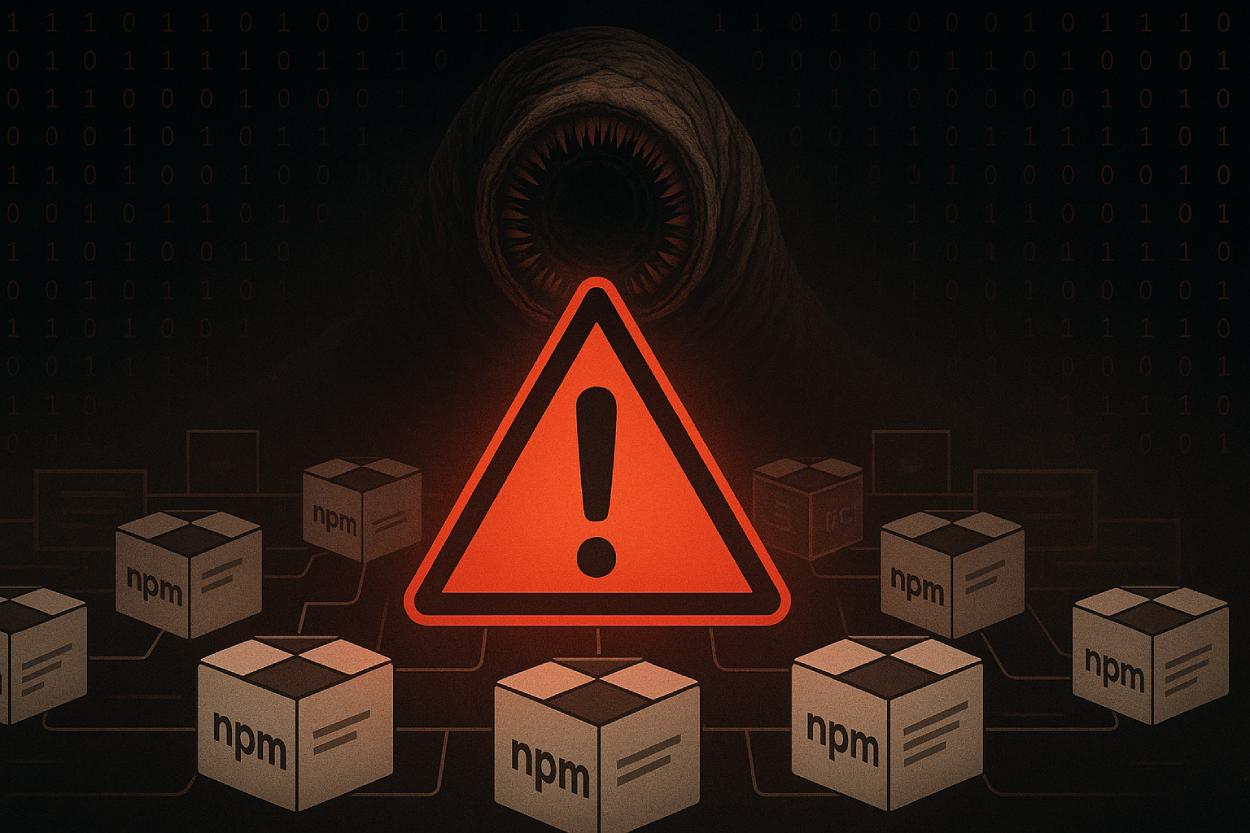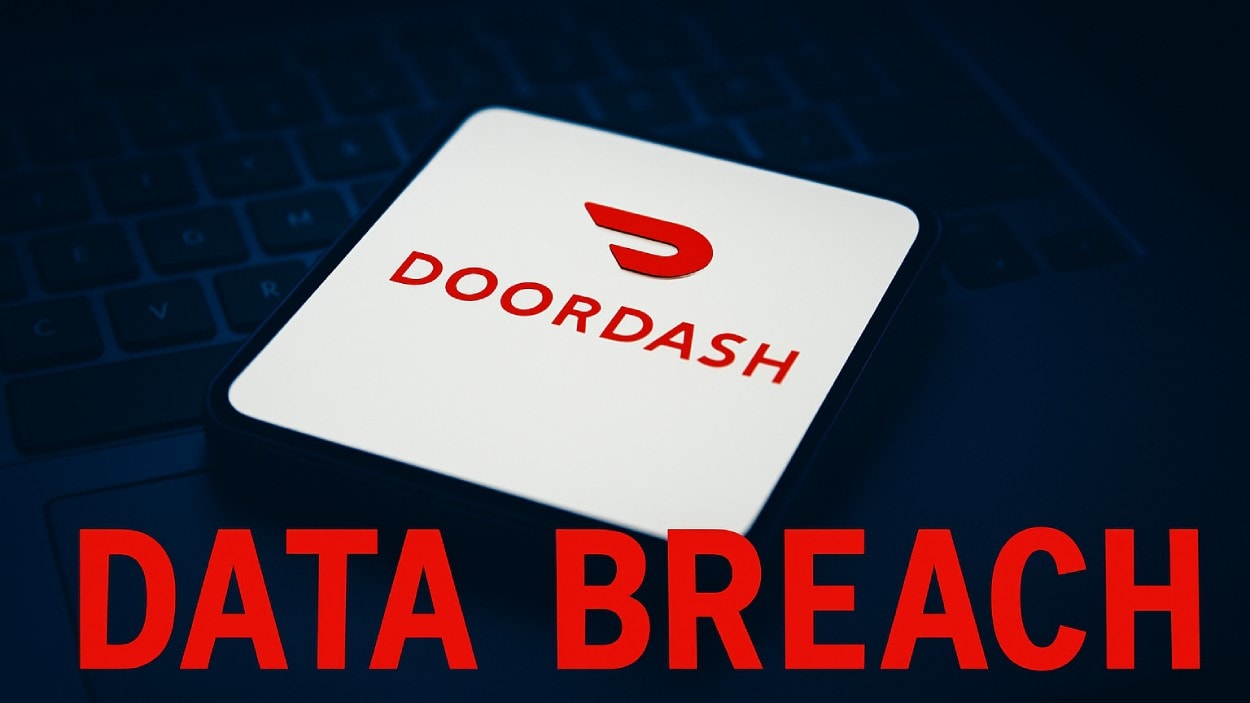The AI chatbot race between Claude and ChatGPT is reshaping how people work and communicate. Whether drafting business code or fast-tracking creative tasks, these tools power productivity and insight across industries. For instance, enterprise teams integrate Claude’s advanced reasoning into analytics platforms, while marketers tap ChatGPT for on-demand content ideation. Scroll down to see how this competition plays out in key metrics and performance data.
Editor’s Choice
- ChatGPT reportedly reached 800 million weekly active users.
- It commands ~60% of all AI-related web traffic, illustrating strong dominance.
- ChatGPT handles 2.5–3 billion prompts daily, averaging 16 minutes of use per person per day.
- Claude’s user base surged ~70% year-over-year, reaching an estimated 300 million monthly active users in early 2025.
- Claude’s enterprise AI assistant market share rose from 18% to 29% over the past year.
- Claude 3.5 reached over 30 million monthly active users in Q2 2025, up 40% from the prior year.
- ChatGPT gets ~5.72 billion monthly visits, reflecting deep user engagement.
Recent Developments
- In August 2025, OpenAI rolled out GPT‑5, promising stronger coding capabilities and smarter agent-like features.
- Anthropic followed with Claude 4 (May 2025) and Claude 4.1 (August 2025), boasting massive context windows of hundreds of thousands of tokens and live coding support through Claude Code.
- OpenAI acquired hardware startup io in May, boosting its AI infrastructure and product design vision.
- OpenAI adopted the Model Context Protocol (MCP) in March 2025 to enhance multiproduct tool connectivity.
- Anthropic secured $3.5 billion in Series E funding early in 2025, reaching a post-money valuation of $61.5 billion.
- Claude integrations now include U.S. defense (via a $200M contract) and a strategic launch of Claude Gov for national security use.
- Anthropic’s partnerships now span education platforms (Canvas, Wiley, Panopto) and a Higher Ed Advisory Board to promote AI fluency.
User Base and Growth
- ChatGPT’s weekly active users doubled from 400 million in February 2025 to 800 million as of today.
- OpenAI’s platform processed over 1 billion daily queries as of 2025.
- ChatGPT Plus counts approximately 10 million paid users.
- In January 2025, Claude had 16 million unique website visitors, down from 18.8 million in November 2024.
- Claude’s monthly active users stood at 18.9 million in early 2025.
- Mobile app usage: Claude had 2.9 million monthly active app users as of January 2025.
Market Share and Adoption Rates
- In August 2025, ChatGPT held 60.4% of the U.S. generative AI chatbot market share, far ahead of Claude at 3.5%.
- Microsoft Copilot and Google Gemini came in at 14.1% and 13.5%, respectively.
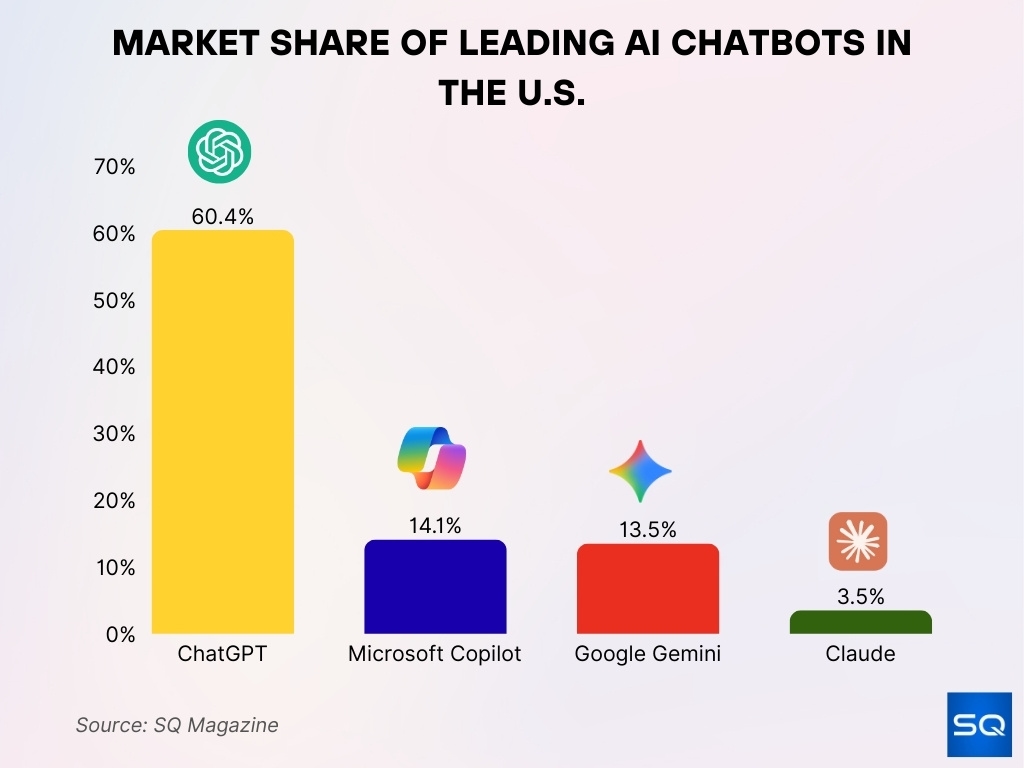
- Claude is showing the strongest quarterly growth among emerging rivals, with a 14% increase in U.S. market share quarter-over-quarter.
- In the enterprise assistant segment, Claude’s share climbed from 18% in 2024 to 29% in 2025.
Usage Statistics and Engagement
- ChatGPT processes 2.5 to 3 billion prompts every day.
- Users spend an average of 16 minutes per day on ChatGPT.
- As of 2025, 190.6 million people use ChatGPT daily.
- Weekly active users: 800 million.
- Claude 3.5 achieved a 40% gain in monthly active users, reaching 30 million.
- Claude processes over 25 billion API calls per month, with 45% from enterprise customers.
- Claude has reached a 92% user satisfaction rate, based on aggregated platform feedback.
Model Architecture and Technology
- Claude 4 (Opus 4 and Sonnet 4) launched in May 2025, introducing advanced code execution tools, Files API, and Model Context Protocol connectors.
- Claude 4.1 debuted in August 2025, retained enterprise pricing while expanding access via GitHub Copilot, Amazon Bedrock, Vertex AI, and paid users.
- Claude Opus 4 is rated “Level 3” on Anthropic’s four-point safety scale, indicating high capability and risk.
- Context window: Claude 3 Opus supports 200K tokens, extendable to 1 million tokens for certain use cases.
- Claude Instant 1.2, a lighter version, offers 100,000-token context capacity.
Claude 3.5 Sonnet vs ChatGPT (GPT-4o) Key Comparison
- Parent companies differ: Claude is built by Anthropic, while ChatGPT comes from OpenAI.
- Core philosophy: Claude emphasizes ethical AI and safety, while ChatGPT focuses on versatility and innovation.
- Latest models: Claude’s current release is Claude 3.5 Sonnet, compared to GPT-4o for ChatGPT.
- Token context window: Claude handles up to 200,000 tokens (150,000+ words), while ChatGPT supports 128,000 tokens.
- Multimodal capabilities: ChatGPT offers text, image, voice, and video, whereas Claude has no multimodal support.
- Internet access: Available in ChatGPT, but absent in Claude.
- Coding capabilities: Claude enables real-time feedback via Artifacts, while ChatGPT is strong but lacks interactive coding tools.
- API pricing: Claude charges $3 (input) / $15 (output) per million tokens, while ChatGPT costs $5 (input) / $15 (output).
- Monthly paid tier: Both offer a subscription at $20 (Claude Pro vs. ChatGPT Plus).
- Safety and ethics: Claude is focused on reducing biases and misinformation, while ChatGPT aims for a balance between safety and creativity.
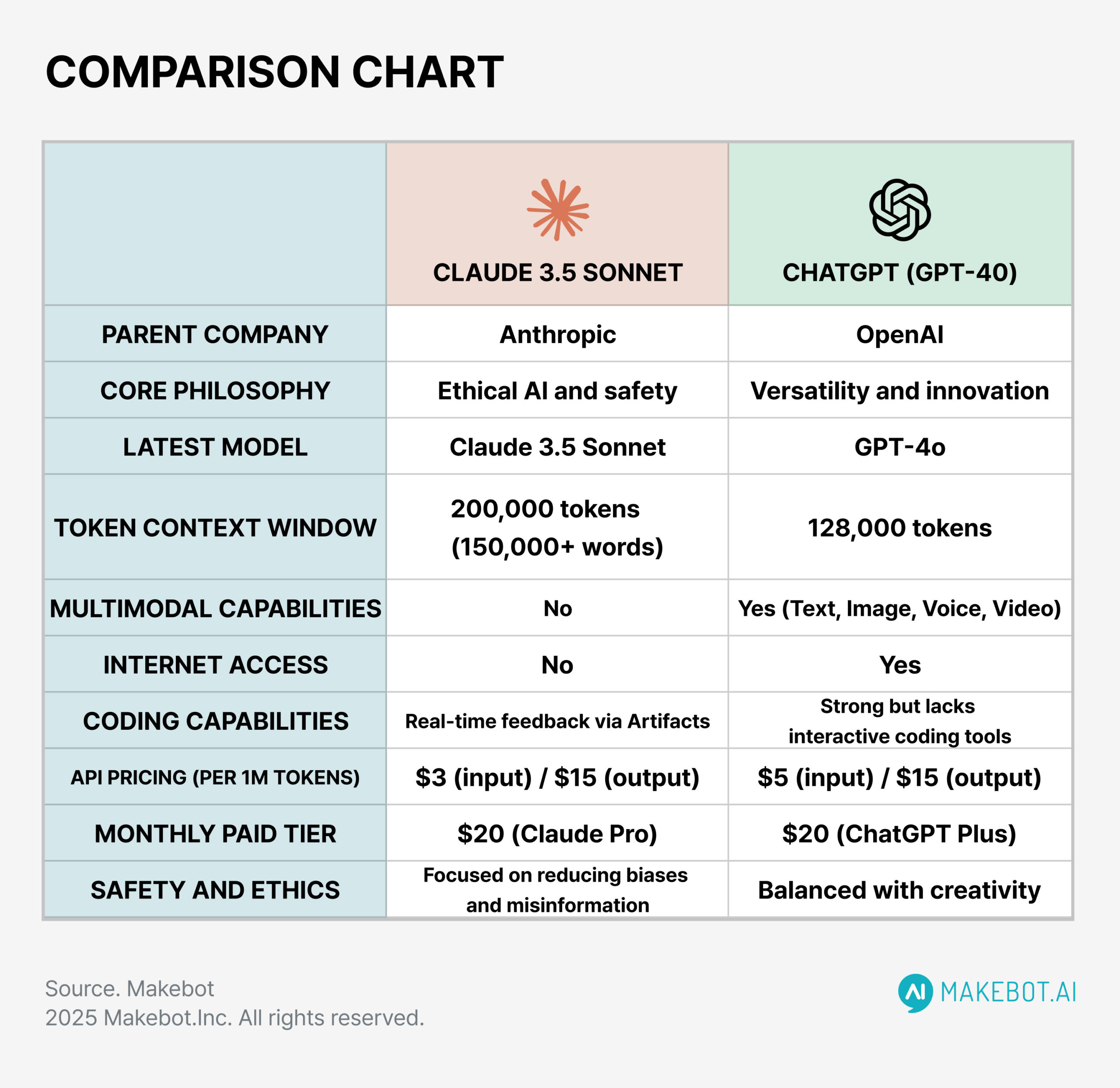
Performance Benchmarks
- ChatGPT‑5 achieves 74.9% on the SWE‑bench Verified exam and 88% on Aider Polyglot, showcasing strong coding and reasoning performance.
- It also scores 94.6% on the AIME 2025 mathematics problems and 84.2% on multimodal understanding (MMMU).
- Claude Opus 4.1 records 74.5% on SWE‑bench Verified, outperforming ChatGPT‑5’s general niche in deep engineering tasks.
- Anthropic claims Opus 4 can run autonomously for seven straight hours, making it ideal for extended agentic reasoning.
- Claude 4 models are 65% less likely to take reasoning shortcuts compared to prior versions, based on internal alignment and robustness tests.
- In hybrid reasoning, ChatGPT‑5 leads in speed and multimodal capabilities, while Claude is more deliberate and accurate.
- Overall, GPT‑5 slightly leads on hard benchmarks, especially in math, coding, and multimodal reasoning, with Claude not far behind in context and conversational stability.
Coding and Developer Tasks
- Claude Sonnet 4 completed real-world coding tasks over seven minutes faster than ChatGPT‑5, citing better structure and output clarity.
- Claude Opus 4 is billed as “the best coding model in the world,” outperforming Gemini 2.5 Pro, OpenAI’s o3, and GPT‑4.1 in tool use and development tasks.
- TechRadar identifies Claude as the best LLM for code generation, citing its large context window, accuracy, and privacy features.
- ChatGPT remains strong in debugging proficiency, particularly in syntax and logic error detection and explanation.
- Digidop reports Claude Opus 4.1 achieved a powerful 74.5% on SWE-bench, versus ChatGPT‑5’s “front-end speed” emphasis.
- Claude Code revenue grew 5.5× following the May 2025 release of Claude 4.
- Anthropic reportedly revoked OpenAI’s access to Claude when it discovered OpenAI staff using Claude’s coding tools for GPT‑5 development, highlighting competitive tension.
ChatGPT vs Gemini vs Claude: Key Pros and Cons
- ChatGPT excels at being highly conversational, supports text, image, voice, and code, and is great for creative writing.
- Limitations of ChatGPT include GPT-4o only in the paid plan and a tendency to hallucinate facts.
- Gemini performs strongly on long documents, offers Google Docs integration, and provides massive memory for context.
- Weaknesses of Gemini are that its tone can feel robotic, and it shows limited creativity.
- Claude stands out for handling big files, delivering fast response times, and being strong at summarizing.
- Drawbacks of Claude include no image capabilities and fewer new models compared to rivals.
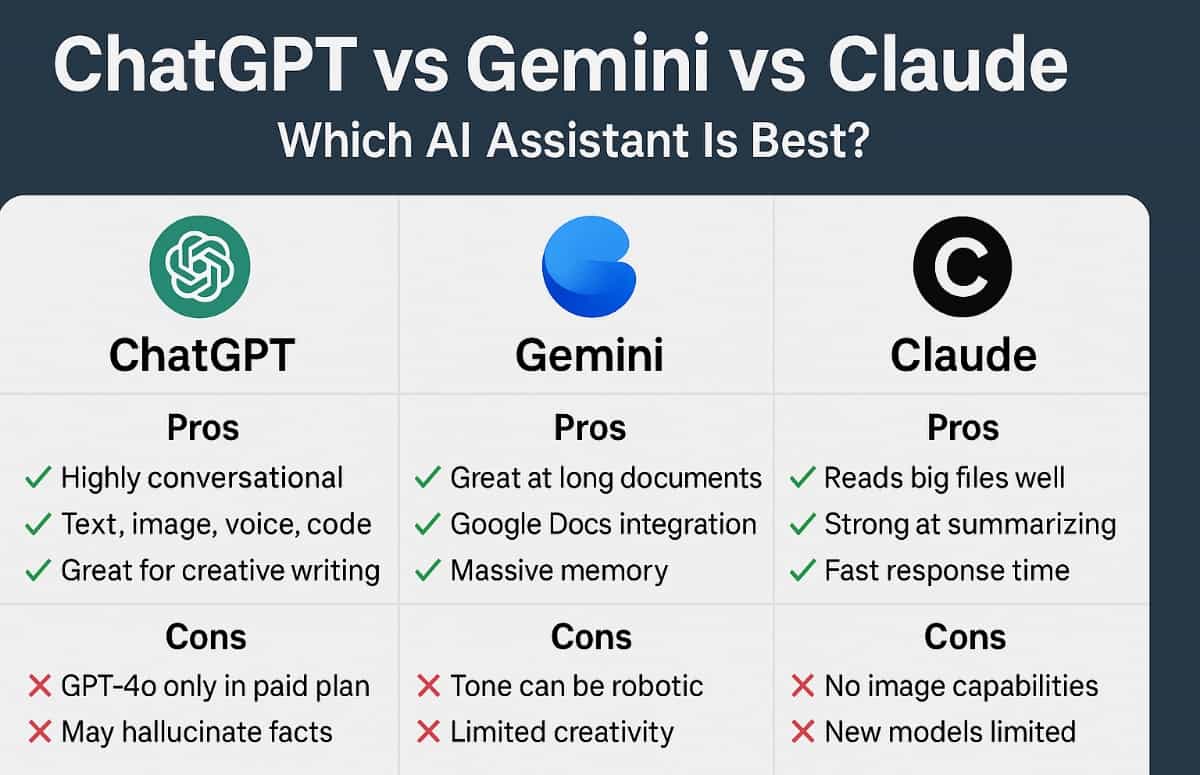
Reasoning and Comprehension Benchmarks
- ChatGPT‑5 achieved 94.6% on the AIME 2025 math benchmark, indicating strong reasoning and problem-solving.
- In the GPQA challenging QA benchmark, GPT‑5 scored 88.4%, edging ahead of Claude.
- Claude’s hybrid reasoning models (Opus 4, Sonnet 4) remain 65% less prone to shortcuts, offering more transparent, step-wise reasoning.
- Claude 3.7 Sonnet’s “extended thinking” mode aids creative outputs through step-by-step reasoning, even if slower.
- Compared to GPT‑5’s speed, Claude leans toward accuracy and structured logic, valuable for complex, long-form tasks.
- Claude’s “thinking summaries” feature offers clearer insight into its reasoning process.
- GPT‑5 continues to lead on most reasoning benchmarks, but Claude offers greater context depth and cautious accuracy.
Multimodal Capabilities
- ChatGPT‑5 shines in multimodal understanding, scoring 84.2% on MMMU tasks.
- Claude supports multimodal input (text + images) across its 3 and 4 model families.
- ChatGPT‑4o powers 65% of user queries, underlining widespread usage of its multimodal features.
- GPT‑5 offers broad-spectrum dominance, particularly in visual and multimodal workflows.
- Claude is noted for cautious, accurate long-context memory, valuable for complex multimodal reasoning.
Employee Views on AI at Work
- 52.84% of employees say AI has been a positive experience in their workplace.
- 39.01% report that AI is sometimes helpful, showing mixed but generally favorable adoption.
- Only 4.49% say AI is rarely beneficial in their daily work.
- A very small share, just 1.65%, believes AI use at work has been negative.
- 2.01% of respondents were uncertain about AI’s impact on their jobs.
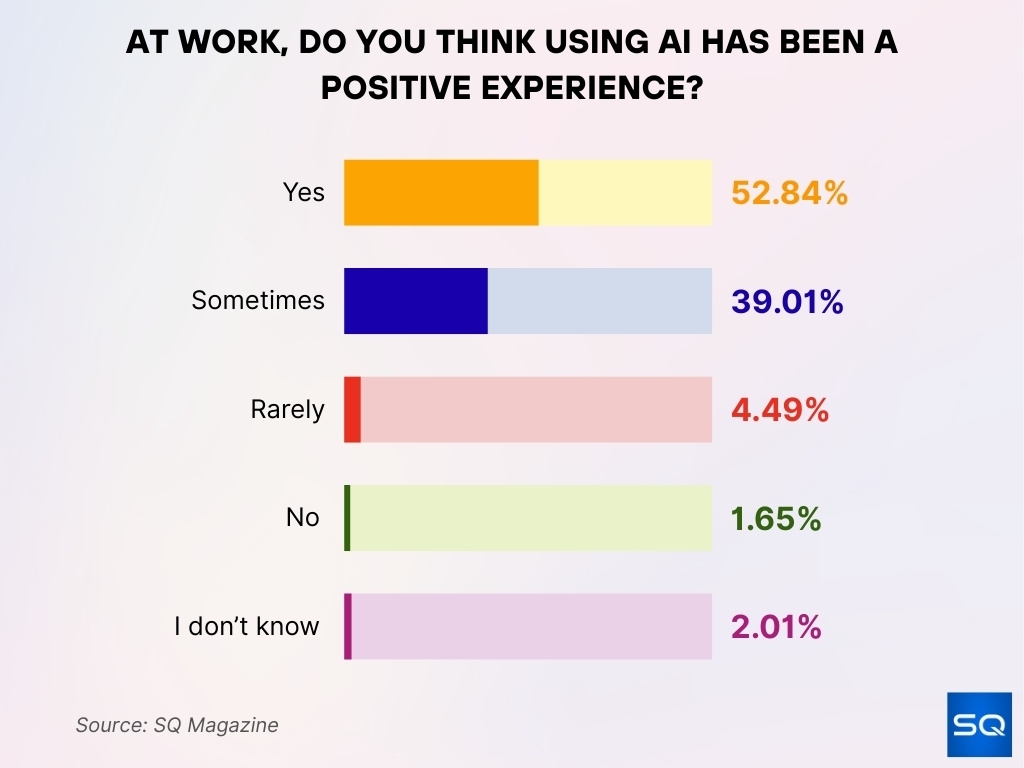
Context Window Size
- Claude 3 Opus supports a 200,000-token context window, with up to 1 million tokens for select use cases.
- Claude Instant 1.2 offers a 100,000-token context option.
- ChatGPT‑5 supports large contexts, though the exact size is unspecified. GPT‑5 prioritizes integration and flexibility.
- In practice, Claude often wins for very long-form tasks due to explicit support for massive context.
Pricing and Subscription Statistics
- Digidop notes pricing alignment, ChatGPT‑5 ranges from free tiers to $200/month, Claude Opus 4.1 sits around $20/month with no free version.
- ChatGPT‑5 offers more tiered access, including free and premium levels. Claude targets a premium, paid-only model.
- Claude Sonnet 4 is available to free users, while Opus 4 features (like extended thinking) remain in paid plans.
- Extended thinking in Claude 3.7 (hybrid reasoning mode) requires a $20/month subscription, similar to ChatGPT Pro.
Free vs. Paid Usage
- Free users can access Claude Sonnet 4, while extended features and Opus models require a subscription.
- Claude 3.7 offers “extended thinking” only with a paid subscription; free users must use standard mode.
- ChatGPT‑5 provides free access at minimal usage, with paid tiers unlocking more features.
- Digidop emphasizes that ChatGPT offers more generous free usage, a plus for broader accessibility.
Integration and Ecosystem Reach
- ChatGPT now integrates with 65% of user queries being powered by GPT‑4o, reflecting widespread adoption of its multimodal and integration features.
- ChatGPT builds custom GPTs and integrates with tools like Zapier, broadening its reach for business workflows.
- Claude supports API-based integrations with Slack, Notion, Canvas, and Wiley, gaining penetration in enterprise education and collaboration environments.
- In business support platforms, both AI tools are embedded into systems like Zendesk, Slack, and Confluence to streamline customer service workflows.
- ChatGPT connects smoothly with Microsoft tools and offers a customizable Agent feature for automation, extending its ecosystem significantly.
- Claude’s Artifacts tool enables real-time code visualization directly within its interface, enhancing developer integration.
- Both models are accessible via web and mobile, supporting seamless integration across platforms.
- Claude’s context window and analytic tone help embed it deeply in writing and legal research pipelines.
Safety and Ethical Standards
- Anthropic’s Constitutional AI trains Claude to self-criticize responses using pre-set principles, enhancing alignment and ethical reasoning.
- Claude Opus 4 is rated “Level 3” on Anthropic’s four-point safety scale, marking high capability paired with potential risk.
- ChatGPT approaches safety cautiously, often refusing uncertain or borderline requests to avoid violations, though this can limit flexibility.
- Both platforms emphasize content safety, with Claude leveraging self-scrutiny and ChatGPT relying on human moderation loops.
- In reliability studies, LLMs like Claude 3.5 Sonnet and ChatGPT‑4o showed high rater accuracy and low bias in automated scoring contexts.
- Outage studies found that ChatGPT failures occur less frequently but take longer to resolve, whereas Claude’s recoveries are quicker but failures happen more often.
Data Privacy and Security
- ChatGPT’s architecture minimizes data sharing; however, a recent incident where logs were indexed raised user trust concerns, highlighting privacy as a competitive factor.
- Both platforms offer enterprise-grade security features, with Claude emphasizing thoughtful, policy-oriented design philosophies.
- The design of Claude’s constitutional training inherently promotes privacy-sensitive responses, aligning with user protections.
- OpenAI’s Model Context Protocol aims to standardize secure multi-product connections, boosting data protection across its ecosystem.
- Enterprise deployments of ChatGPT and Claude adhere to strict compliance with data governance norms, especially in regulated sectors (education, defense).
Customer Satisfaction Ratings
- On G2, ChatGPT earns 4.7/5, while Claude scores 4.3/5. Users rate ChatGPT higher for research depth, and Claude higher for creative writing and coding.
- This user feedback suggests Claude shines on structured tasks and emotional nuance, while ChatGPT wins for ease-of-use and versatility.
- In a Tom’s Guide face-off, Claude scored higher on deep reasoning and emotional intelligence, while ChatGPT-5 led in creative writing, planning, and practical tasks.
- Another in-depth test found Claude 3.7 Sonnet outperformed ChatGPT‑4o in six out of seven complex tasks, especially logic and structure, reinforcing its strengths in analytical domains.
Regional Popularity and Demographics
- ChatGPT’s adoption spans the US (19%), India (8%), Brazil (5%), Canada (3.5%), UK (3.5%), with strong growth in Kenya and other emerging markets.
- As of August 2025, the U.S. contributes 15.1% of ChatGPT’s traffic, followed by India at 9.42%.
- Claude’s monthly active users stand at 18.9 million, with the U.S. and India together accounting for 33.13% of its user base.
- Claude’s audience skews younger (18–24: 51.9%) and male (77.1%), with decreasing usage among older demographics.
- Claude’s app downloads steadily rose to approximately 769.6k in January 2025, showing mobile traction.
Conclusion
Claude and ChatGPT clearly lead the AI chatbot race today, but they excel in different strengths. ChatGPT dominates in global reach, integration versatility, and creative execution, while Claude earns praise for its analytical clarity, ethical safeguards, and long-context reasoning. Ultimately, choosing the right platform depends on your task type and context. Go with ChatGPT for broad automation and real-world utility, and Claude for structured thinking, sensitive content, and complex reasoning. The future belongs to both, empowering users to mix, match, and unlock maximum AI potential.

